- Try for free

How to Write an Essay Outline + Essay Outline Examples
Download for free, how to write an essay outline + essay outline examples .
Writing an essay can seem like a daunting task, but one of the best ways to tackle this challenge is to organize your ideas into a well-structured essay outline. This guide will walk you through the process of creating an essay outline, complete with essay outline examples, to ensure your next essay is a masterpiece.
We’ve compiled a variety of essay outline examples to help you understand how to structure your own essay. We'll cover persuasive essays, narrative essays, descriptive essays, expository essays, and even provide a sample research paper outline. Each example will provide you with an idea of how to lay out the structure and details for each type of essay.
Looking for a printable list of essay outline examples? Our printable PDF features essay outline examples and templates that your students can use as examples when writing research papers, or as a supplement for an essay-writing unit
Why write an essay outline?
An outline serves as the skeleton of your essay, giving you a clear and organized path to articulate your thoughts. Not only does it make writing an essay significantly easier, but it also allows you to present your arguments coherently and effectively.
An essay outline will help you organize your main ideas and determine the order in which you are going to write about them.

Types of essay outlines
Several types of essay outlines can be used when writing an essay. The two most common types are the alphanumeric outline and the decimal outline.
An alphanumeric outline typically uses Roman numerals, capital letters, Arabic numerals, and lowercase letters, in that order. Each level provides a different level of specificity. This structure is a very effective way to think through how you will organize and present the information in your essay. It also helps you develop a strong argumentative essay.
Alternatively, a decimal outline uses only numbers, and each subsection is a decimal subdivision of the main section. This type of outline is often used in scientific papers.
Persuasive essay outline example
In the following section, we'll explore a persuasive essay outline example on competitive swimming. The purpose of a persuasive essay is to convince the reader of a particular point of view or idea, using compelling arguments and evidence.
In this case, the argument is that competitive swimming is an ideal sport for kids. The essay will present a series of arguments to support this view, demonstrating the various benefits of competitive swimming for children.
Competitive Swimming, an Ideal Sport for Kids
Introduction
Start your argumentative essay outline by stating your point of view and/or presenting your persuasive argument.
Thesis: Competitive swimming is a great alternative to other youth sports.
Body Paragraph 1
Introduce your primary persuasive argument and provide supporting details in your argumentative essay outline.
Topic Sentence: Competitive swimming provides the same benefits as other sports.
- Detail Sentence 1: It is good exercise and builds muscular strength.
- Detail Sentence 2: It promotes cooperation among team members, especially in relays.
Body Paragraph 2
Introduce a secondary argument and provide supporting details.
Topic Sentence: Competitive swimming provides some unique additional benefits.
- Detail Sentence 1: Swimming is an important skill that can be used forever.
- Detail Sentence 2: Swimming poses a reduced risk of injury.
- Detail Sentence 3: Each swimmer can easily chart his or her own progress.
Conclude your essay writing with a summary of the thesis and persuasive arguments. Brainstorming details that support your point-of-view is a great way to start before creating your outline and first draft.
Concluding Sentence: There are many reasons why competitive swimming is a great alternative to other youth sports, including...
Narrative essay outline example
In the following section, we will examine a narrative essay outline example titled "How Losing a Swim Meet Made Me a Better Swimmer." Narrative essays aim to tell a story, often about a personal experience, to engage the reader and convey a particular point or lesson.
In this case, the narrative revolves around the author's personal journey of improvement and self-discovery through swimming. The essay will illustrate how an initial setback served as a catalyst for significant improvement and personal growth.
How Losing a Swim Meet Made Me a Better Swimmer
Introduce the subject of your narrative essay using a thesis statement and a plan of development (POD).
Thesis: The first time I participated in a competitive swim meet, I finished in last place. With more focused training and coaching, I was able to finish 2nd in the State Championship meet.
Plan of development: I was very disappointed in my results from the first meet, so I improved my training and fitness. This helped me swim better and faster, which helped me to greatly improve my results.
Set the scene and provide supporting details. Again, start by brainstorming different ways to begin; then go ahead and craft an outline and a first draft.
Topic Sentence: I was embarrassed at finishing last in my first competitive swim meet, so I began working on ways to improve my performance.
- Detail Sentence 1: I spent extra time with my coach and the team captains learning how to improve my technique.
- Detail Sentence 2: I started running and lifting weights to increase my overall fitness level.
Provide additional supporting details, descriptions, and experiences to develop your general idea in your essay writing.
Topic Sentence: Over time, my results began to improve and I was able to qualify for the state championship meet.
- Detail Sentence 1: My technique and fitness level made me faster and able to swim longer distances.
- Detail Sentence 2: I steadily got better, and I began winning or placing in the top 3 at most of my meets.
- Detail Sentence 3: My results improved to the point that I was able to qualify for the state championship meet.
Body Paragraph 3
The next step in the writing process is to provide additional supporting details, descriptions, and experiences. You can then divide them up under different headings.
Topic Sentence: With my new confidence, techniques, and fitness level, I was able to finish 2nd at the state championship meet.
- Detail Sentence 1: I was able to swim well against a higher level of competition due to my training and technique.
- Detail Sentence 2: I was no longer embarrassed about my last-place finish, and was able to use it as motivation!
Conclude the narrative essay with a recap of the events described or a reflection on the lesson learned in the story. Briefly summarize the details you included under each heading.
Concluding Sentence: I used my last-place finish in my first competitive swim meet as motivation to improve my performance.
Descriptive essay outline example
We will now delve into a descriptive essay outline example. Descriptive essays aim to create a vivid and detailed description of a person, place, object, or event to paint a picture for the reader. The intention is to immerse the reader in the subject matter fully.
In this case, the essay provides an in-depth description of a visit to the Hockey Hall of Fame in Toronto. The essay will use sensory and descriptive details to create a vivid and memorable experience for the reader.
Visiting the Hockey Hall of Fame
Introduce the subject of your descriptive essay with a thesis statement covering the person, place, object, etc. you are writing about.
Thesis: The Hockey Hall of Fame is full of sights, sounds, and experiences that will delight hockey fans of all ages.
Set the scene and provide factual details.
Topic Sentence: The Hockey Hall of Fame is located in Toronto, Canada and features exhibits from amateur and professional hockey.
- Detail Sentence 1: The Hall is located in downtown Toronto and is visited by 1 million people every year.
- Detail Sentence 2: You can see exhibits ranging from the early beginnings of the sport to the modern NHL and Olympics.
Provide additional sensory details, descriptions, and experiences.
Topic Sentence: There are many types of exhibits and shows, including activities you can participate in.
- Detail Sentence 1: Player statues, plaques, and jerseys decorate the walls in every room of the Hall.
- Detail Sentence 2: Many of the exhibits have movies and multimedia activities that make you feel like you're part of the game.
- Detail Sentence 3: You can even practice shooting pucks on virtual versions of some of the game's greatest goalies!
Conclude the essay with a paragraph that restates the thesis and recaps the descriptive and sensory details.
Concluding Sentence: The Hockey Hall of Fame is an experience that combines the best sights, sounds and history of the game in Toronto.
Expository essay outline example
In the following section, we will explore an example of an expository essay. An expository essay aims to explain or describe a topic using logic. It presents a balanced analysis of a topic based on facts—with no references to the writer’s opinions or emotions.
For this example, the topic is "Why The School Year Should be Shorter". This essay will use logic and reason to demonstrate that a shorter school year could provide various benefits for students, teachers, and school districts.
Why The School Year Should be Shorter
Introduce the primary argument or main point of an expository essay, or other types of academic writing, using a thesis statement and context.
Thesis: The school year is too long, and should be shortened to benefit students and teachers, save districts money, and improve test scores and academic results. Other countries have shorter school years, and achieve better results.
Describe the primary argument and provide supporting details and evidence.
Topic Sentence: A shorter school year would benefit students and teachers by giving them more time off.
- Detail Sentence 1: Students and teachers would be able to spend more time with their families.
- Detail Sentence 2: Teachers would be refreshed and rejuvenated and able to teach more effectively.
Provide additional supporting details and evidence, as in this essay outline example.
Topic Sentence: A shorter school year would save school districts millions of dollars per year.
- Detail Sentence 1: Districts could save money on energy costs by keeping schools closed longer.
- Detail Sentence 2: A shorter school year means much lower supply and transportation costs.
- Detail Sentence 3: Well-rested and happy students would help improve test scores.
Provide additional or supplemental supporting details, evidence, and analysis, as in the essay outline example.
Topic Sentence: Shortening the school year would also provide many benefits for parents and caregivers.
- Detail Sentence 1: A shorter school year would mean less stress and running around for parents.
- Detail Sentence 2: Caregivers would have more balance in their lives with fewer days in the school year.
Conclude the essay with an overview of the main argument, and highlight the importance of your evidence and conclusion.
Concluding Sentence: Shortening the school year would be a great way to improve the quality of life for students, teachers, and parents while saving money for districts and improving academic results.
Sample research paper outline
Now let’s dive into a research paper outline. Unlike a typical essay, a research paper presents a thorough and detailed study on a specific topic. However, it shares the same foundation with an essay in terms of structuring the ideas logically and coherently. The outline for a research paper includes an introduction, a series of topic points that cover various aspects of the main topic, and a conclusion.
This research paper will explore the background of Mt. Everest, the major explorers who attempted its summit, and the impact of these expeditions on Mt. Everest and the local community.
The Conquest of Mt. Everest
- Location of Mt. Everest
- Geography of the Surrounding Area
- Height of the mountain
- Jomolungma (Tibetan name)
- Sagarmatha (Nepalese name)
- The number of people who have climbed Everest to date
- First to reach the summit (1953)
- Led a team of experienced mountain climbers who worked together
- Norgay was an experienced climber and guide who accompanied Hillary
- Sherpas still used to guide expeditions
- Leader of the failed 1996 expedition
- Led group of (mainly) tourists with little mountain climbing experience
- Loss of trees due to high demand for wood for cooking and heating for tourists.
- Piles of trash left by climbing expeditions
- Expedition fees provide income for the country
- Expeditions provide work for the Sherpas, contributing to the local economy.
- Introduction of motor vehicles
- Introduction of electricity
The Everest essay outline template is based on a research paper submitted by Alexandra Ferber, 9th grade.
Happy writing!
Writing an essay outline is a crucial step in crafting a well-structured and coherent essay. Regardless of the type of essay - be it persuasive, narrative, descriptive, expository, or a research paper - an outline serves as a roadmap that organizes your thoughts and guides your writing process. The various essay outline examples provided above serve as a guide to help you structure your own essay. Remember, the key to a great essay lies not just in the content but in its organization and flow. Happy writing!
Featured High School Resources

Related Resources

Essay Writing Guide
Essay Outline
Last updated on: Jun 10, 2023
A Complete Essay Outline - Guidelines and Format
By: Nova A.
13 min read
Reviewed By: Melisa C.
Published on: Jan 15, 2019

To write an effective essay, you need to create a clear and well-organized essay outline. An essay outline will shape the essay’s entire content and determine how successful the essay will be.
In this blog post, we'll be going over the basics of essay outlines and provide a template for you to follow. We will also include a few examples so that you can get an idea about how these outlines look when they are put into practice.
Essay writing is not easy, but it becomes much easier with time, practice, and a detailed essay writing guide. Once you have developed your outline, everything else will come together more smoothly.
The key to success in any area is preparation - take the time now to develop a solid outline and then write your essays!
So, let’s get started!

On this Page
What is an Essay Outline?
An essay outline is your essay plan and a roadmap to essay writing. It is the structure of an essay you are about to write. It includes all the main points you have to discuss in each section along with the thesis statement.
Like every house has a map before it is constructed, the same is the importance of an essay outline. You can write an essay without crafting an outline, but you may miss essential information, and it is more time-consuming.
Once the outline is created, there is no chance of missing any important information. Also, it will help you to:
- Organize your thoughts and ideas.
- Understand the information flow.
- Never miss any crucial information or reference.
- Finish your work faster.
These are the reasons if someone asks you why an essay outline is needed. Now there are some points that must be kept in mind before proceeding to craft an essay outline.

Easily Outline Your Essays In Seconds!
Prewriting Process of Essay Outline
Your teacher may ask you to submit your essay outline before your essay. Therefore, you must know the preliminary guidelines that are necessary before writing an essay outline.
Here are the guidelines:
- You must go through your assignments’ guidelines carefully.
- Understand the purpose of your assignment.
- Know your audience.
- Mark the important point while researching your topic data.
- Select the structure of your essay outline; whether you are going to use a decimal point bullet or a simple one.

Paper Due? Why Suffer? That's our Job!
How to Write an Essay Outline in 4 Steps
Creating an essay outline is a crucial step in crafting a well-structured and organized piece of writing. Follow these four simple steps to create an effective outline:
Step 1: Understand the Topic
To begin, thoroughly grasp the essence of your essay topic.
Break it down into its key components and identify the main ideas you want to convey. This step ensures you have a clear direction and focus for your essay.
Step 2: Brainstorm and Gather Ideas
Let your creativity flow and brainstorm ideas related to your topic.
Jot down key pieces of information, arguments, and supporting evidence that will strengthen your essay's overall message. Consider different perspectives and potential counterarguments to make your essay well-rounded.
Step 3: Organize Your Thoughts
Now it's time to give structure to your ideas.
Arrange your main points in a logical order, starting with an attention-grabbing introduction, followed by body paragraphs that present your arguments.
Finally, tie everything together with a compelling conclusion. Remember to use transitional phrases to create smooth transitions between sections.
Step 4: Add Depth with Subpoints
To add depth and clarity to your essay, incorporate subpoints under each main point.
These subpoints provide more specific details, evidence, or examples that support your main ideas. They help to further strengthen your arguments and make your essay more convincing.
By following these four steps - you'll be well on your way to creating a clear and compelling essay outline.
Essay Outline Format
It is an easy way for you to write your thoughts in an organized manner. It may seem unnecessary and unimportant, but it is not.
It is one of the most crucial steps for essay writing as it shapes your entire essay and aids the writing process.
An essay outline consists of three main parts:
1. Introduction
The introduction body of your essay should be attention-grabbing. It should be written in such a manner that it attracts the reader’s interest. It should also provide background information about the topic for the readers.
You can use a dramatic tone to grab readers’ attention, but it should connect the audience to your thesis statement.
Here are some points without which your introduction paragraph is incomplete.
To attract the reader with the first few opening lines, we use a hook statement. It helps engage the reader and motivates them to read further. There are different types of hook sentences ranging from quotes, rhetorical questions to anecdotes and statistics, and much more.
Are you struggling to come up with an interesting hook? View these hook examples to get inspired!
A thesis statement is stated at the end of your introduction. It is the most important statement of your entire essay. It summarizes the purpose of the essay in one sentence.
The thesis statement tells the readers about the main theme of the essay, and it must be strong and clear. It holds the entire crux of your essay.
Need help creating a strong thesis statement? Check out this guide on thesis statements and learn to write a statement that perfectly captures your main argument!
2. Body Paragraphs
The body paragraphs of an essay are where all the details and evidence come into play. This is where you dive deep into the argument, providing explanations and supporting your ideas with solid evidence.
If you're writing a persuasive essay, these paragraphs will be the powerhouse that convinces your readers. Similarly, in an argumentative essay, your body paragraphs will work their magic to sway your audience to your side.
Each paragraph should have a topic sentence and no more than one idea. A topic sentence is the crux of the contents of your paragraph. It is essential to keep your reader interested in the essay.
The topic sentence is followed by the supporting points and opinions, which are then justified with strong evidence.
3. Conclusion
When it comes to wrapping up your essay, never underestimate the power of a strong conclusion. Just like the introduction and body paragraphs, the conclusion plays a vital role in providing a sense of closure to your topic.
To craft an impactful conclusion, it's crucial to summarize the key points discussed in the introduction and body paragraphs. You want to remind your readers of the important information you shared earlier. But keep it concise and to the point. Short, powerful sentences will leave a lasting impression.
Remember, your conclusion shouldn't drag on. Instead, restate your thesis statement and the supporting points you mentioned earlier. And here's a pro tip: go the extra mile and suggest a course of action. It leaves your readers with something to ponder or reflect on.
5 Paragraph Essay Outline Structure
An outline is an essential part of the writing as it helps the writer stay focused. A typical 5 paragraph essay outline example is shown here. This includes:
- State the topic
- Thesis statement
- Introduction
- Explanation
- A conclusion that ties to the thesis
- Summary of the essay
- Restate the thesis statement
Tough Essay Due? Hire Tough Writers!
Essay Outline Template
The outline of the essay is the skeleton that you will fill out with the content. Both outline and relevant content are important for a good essay. The content you will add to flesh out the outline should be credible, relevant, and interesting.
The outline structure for the essay is not complex or difficult. No matter which type of essay you write, you either use an alphanumeric structure or a decimal structure for the outline.
Below is an outline sample that you can easily follow for your essay.
Essay Outline Sample
Essay Outline Examples
An essay outline template should follow when you start writing the essay. Every writer should learn how to write an outline for every type of essay and research paper.
Essay outline 4th grade
Essay outline 5th grade
Essay outline high school
Essay outline college
Given below are essay outline examples for different types of essay writing.
Argumentative Essay Outline
An argumentative essay is a type of essay that shows both sides of the topic that you are exploring. The argument that presents the basis of the essay should be created by providing evidence and supporting details.
Persuasive Essay Outline
A persuasive essay is similar to an argumentative essay. Your job is to provide facts and details to create the argument. In a persuasive essay, you convince your readers of your point of view.
Compare and Contrast Essay Outline
A compare and contrast essay explains the similarities and differences between two things. While comparing, you should focus on the differences between two seemingly similar objects. While contrasting, you should focus on the similarities between two different objects.
Narrative Essay Outline
A narrative essay is written to share a story. Normally, a narrative essay is written from a personal point of view in an essay. The basic purpose of the narrative essay is to describe something creatively.
Expository Essay Outline
An expository essay is a type of essay that explains, analyzes, and illustrates something for the readers. An expository essay should be unbiased and entirely based on facts. Be sure to use academic resources for your research and cite your sources.
Analytical Essay Outline
An analytical essay is written to analyze the topic from a critical point of view. An analytical essay breaks down the content into different parts and explains the topic bit by bit.
Rhetorical Analysis Essay Outline
A rhetorical essay is written to examine the writer or artist’s work and develop a great essay. It also includes the discussion.
Cause and Effect Essay Outline
A cause and effect essay describes why something happens and examines the consequences of an occurrence or phenomenon. It is also a type of expository essay.
Informative Essay Outline
An informative essay is written to inform the audience about different objects, concepts, people, issues, etc.
The main purpose is to respond to the question with a detailed explanation and inform the target audience about the topic.
Synthesis Essay Outline
A synthesis essay requires the writer to describe a certain unique viewpoint about the issue or topic. Create a claim about the topic and use different sources and information to prove it.
Literary Analysis Essay Outline
A literary analysis essay is written to analyze and examine a novel, book, play, or any other piece of literature. The writer analyzes the different devices such as the ideas, characters, plot, theme, tone, etc., to deliver his message.
Definition Essay Outline
A definition essay requires students to pick a particular concept, term, or idea and define it in their own words and according to their understanding.
Descriptive Essay Outline
A descriptive essay is a type of essay written to describe a person, place, object, or event. The writer must describe the topic so that the reader can visualize it using their five senses.
Evaluation Essay Outline
Problem Solution Essay Outline
In a problem-solution essay, you are given a problem as a topic and you have to suggest multiple solutions on it.
Scholarship Essay Outline
A scholarship essay is required at the time of admission when you are applying for a scholarship. Scholarship essays must be written in a way that should stand alone to help you get a scholarship.
Reflective Essay Outline
A reflective essay is written to express your own thoughts and point of view regarding a specific topic.
Getting started on your essay? Give this comprehensive essay writing guide a read to make sure you write an effective essay!
With this complete guide, now you understand how to create an outline for your essay successfully. However, if you still can’t write an effective essay, then the best option is to consult a professional academic writing service.
Essay writing is a dull and boring task for some people. So why not get some help instead of wasting your time and effort? 5StarEssays.com is here to help you. All your do my essay for me requests are managed by professional essay writers.
Place your order now, and our team of expert academic writers will help you.
Frequently Asked Questions
What are the three types of outlines.
Here are the three types of essay outline;
- Working outline
- Speaking outline
- Full-sentence outline
All three types are different from each other and are used for different purposes.
What does a full-sentence outline look like?
A full sentence outline contains full sentences at each level of the essay’s outline. It is similar to an alphanumeric outline and it is a commonly used essay outline.
What is a traditional outline format?
A traditional essay outline begins with writing down all the important points in one place and listing them down and adding sub-topics to them. Besides, it will also include evidence and proof that you will use to back your arguments.
What is the benefit of using a traditional outline format and an informal outline format?
A traditional outline format helps the students in listing down all the important details in one palace while an informal outline will help you coming up with new ideas and highlighting important points

As a Digital Content Strategist, Nova Allison has eight years of experience in writing both technical and scientific content. With a focus on developing online content plans that engage audiences, Nova strives to write pieces that are not only informative but captivating as well.
Was This Blog Helpful?
Keep reading.
- How to Write an Essay - A Complete Guide with Examples

- The Art of Effective Writing: Thesis Statements Examples and Tips

- Writing a 500 Word Essay - Easy Guide

- What is a Topic Sentence - An Easy Guide with Writing Steps & Examples

- 220 Best Transition Words for Essays

- Essay Format: Detailed Writing Tips & Examples

- How to Write a Conclusion - Examples & Tips

- Essay Topics: 100+ Best Essay Topics for your Guidance

- How to Title an Essay: A Step-by-Step Guide for Effective Titles

- How to Write a Perfect 1000 Word Essay

- How To Make An Essay Longer - Easy Guide For Beginners

- Learn How to Start an Essay Effectively with Easy Guidelines

- Types of Sentences With Examples

- Hook Examples: How to Start Your Essay Effectively

- Essay Writing Tips - Essential Do’s and Don’ts to Craft Better Essays

- How To Write A Thesis Statement - A Step by Step Guide

- Art Topics - 200+ Brilliant Ideas to Begin With

- Writing Conventions and Tips for College Students

People Also Read
- essay writing service
- classification essay topics
- psychology research topics
- types of sentences
- critical essay writing
Burdened With Assignments?

Advertisement
- Homework Services: Essay Topics Generator
© 2024 - All rights reserved
Trying to devise a structure for your essay can be one of the most difficult parts of the writing process. Making a detailed outline before you begin writing is a good way to make sure your ideas come across in a clear and logical order. A good outline will also save you time in the revision process, reducing the possibility that your ideas will need to be rearranged once you've written them.
The First Steps
Before you can begin outlining, you need to have a sense of what you will argue in the essay. From your analysis and close readings of primary and/or secondary sources you should have notes, ideas, and possible quotes to cite as evidence. Let's say you are writing about the 1999 Republican Primary and you want to prove that each candidate's financial resources were the most important element in the race. At this point, your notes probably lack much coherent order. Most likely, your ideas are still in the order in which they occurred to you; your notes and possible quotes probably still adhere to the chronology of the sources you've examined. Your goal is to rearrange your ideas, notes, and quotes—the raw material of your essay—into an order that best supports your argument, not the arguments you've read in other people's works. To do this, you have to group your notes into categories and then arrange these categories in a logical order.
Generalizing
The first step is to look over each individual piece of information that you've written and assign it to a general category. Ask yourself, "If I were to file this in a database, what would I file it under?" If, using the example of the Republican Primary, you wrote down an observation about John McCain's views on health care, you might list it under the general category of "Health care policy." As you go through your notes, try to reuse categories whenever possible. Your goal is to reduce your notes to no more than a page of category listings.
Now examine your category headings. Do any seem repetitive? Do any go together? "McCain's expenditure on ads" and "Bush's expenditure on ads," while not exactly repetitive, could easily combine into a more general category like "Candidates' expenditures on ads." Also, keep an eye out for categories that no longer seem to relate to your argument. Individual pieces of information that at first seemed important can begin to appear irrelevant when grouped into a general category.
Now it's time to generalize again. Examine all your categories and look for common themes. Go through each category and ask yourself, "If I were to place this piece of information in a file cabinet, what would I label that cabinet?" Again, try to reuse labels as often as possible: "Health Care," "Foreign Policy," and "Immigration" can all be contained under "Policy Initiatives." Make these larger categories as general as possible so that there are no more than three or four for a 7-10 page paper.
With your notes grouped into generalized categories, the process of ordering them should be easier. To begin, look at your most general categories. With your thesis in mind, try to find a way that the labels might be arranged in a sentence or two that supports your argument. Let's say your thesis is that financial resources played the most important role in the 1999 Republican Primary. Your four most general categories are "Policy Initiatives," "Financial Resources," "Voters' Concerns," and "Voters' Loyalty." You might come up with the following sentence: ÒAlthough McCain's policy initiatives were closest to the voters' concerns, Bush's financial resources won the voters' loyalty.Ó This sentence should reveal the order of your most general categories. You will begin with an examination of McCain's and Bush's views on important issues and compare them to the voters' top concerns. Then you'll look at both candidates' financial resources and show how Bush could win voters' loyalty through effective use of his resources, despite his less popular policy ideas.
With your most general categories in order, you now must order the smaller categories. To do so, arrange each smaller category into a sentence or two that will support the more general sentence you've just devised. Under the category of "Financial Resources," for instance, you might have the smaller categories of "Ad Expenditure," "Campaign Contributions" and "Fundraising." A sentence that supports your general argument might read: "Bush's early emphasis on fundraising led to greater campaign contributions, allowing him to have a greater ad expenditure than McCain."
The final step of the outlining process is to repeat this procedure on the smallest level, with the original notes that you took for your essay. To order what probably was an unwieldy and disorganized set of information at the beginning of this process, you need now only think of a sentence or two to support your general argument. Under the category "Fundraising," for example, you might have quotes about each candidate's estimation of its importance, statistics about the amount of time each candidate spent fundraising, and an idea about how the importance of fundraising never can be overestimated. Sentences to support your general argument might read: "No candidate has ever raised too much money [your idea]. While both McCain and Bush acknowledged the importance of fundraising [your quotes], the numbers clearly point to Bush as the superior fundraiser [your statistics]." The arrangement of your ideas, quotes, and statistics now should come naturally.
Putting It All Together
With these sentences, you have essentially constructed an outline for your essay. The most general ideas, which you organized in your first sentence, constitute the essay's sections. They follow the order in which you placed them in your sentence. The order of the smaller categories within each larger category (determined by your secondary sentences) indicates the order of the paragraphs within each section. Finally, your last set of sentences about your specific notes should show the order of the sentences within each paragraph. An outline for the essay about the 1999 Republican Primary (showing only the sections worked out here) would look something like this:
I. POLICY INITIATIVES
II. VOTERS' CONCERNS
III. FINANCIAL RESOURCES
A. Fundraising
a. Original Idea
b. McCain Quote/Bush Quote
c. McCain Statistics/Bush Statistics
B. Campaign Contributions
C. Ad Expenditure
IV. VOTERS' LOYALTY
Copyright 2000, David Kornhaber, for the Writing Center at Harvard University
How to Write an Essay Outline?
28 August, 2020
8 minutes read
Author: Tomas White
Now that the school year has begun, you will start to receive many essay assignments. One way to organize your thoughts before writing is to create an essay outline. What is an essay outline? It's a tool that helps you organize your ideas and write a better essay. In this article, we will discuss why writing an outline for your essay is helpful, how it will improve your writing, and how to go about creating one.

What is an Essay Outline?
An outline is a tool that you can use for organizing your ideas and structuring your essay in a proper manner. It should summarize your essay and help you organize your content in a logical order. An outline can guide you throughout the writing process and remind you of what you should be writing about. Most commonly, an essay is written following a 5-paragraph structure, addressing the key points that you have laid out in the outline. Below, you will find more about the proper structure of your essay outline and what these 5 paragraphs should include.
Why Do You Need It?
Sitting down to write an essay can be overwhelming. Writing an outline helps alleviate some of that frustration. Furthermore, it will help you organize thoughts, present ideas logically and with a natural flow, as well as clarify your thesis and conclusion.
Find out the basic essay information with this article: What is an Essay?
Overall, an outline will help you communicate your point in a clear and organized format. The structure of your essay will rely on the outline you compose.
Preparing Your Outline
Before you begin writing an outline for the essay, make sure you understand the assignment. Namely, what exactly is the instructor looking for? Our essay writer recommends you to follow these simple steps:

1. Develop a Topic
The first step in your outline is to identify your topic. Once you have a clear understanding of the instructor’s expectations, begin brainstorming topics that fit within the assignment. Make a list of ideas and pick the ones that are of your interest. If you are stuck between a few ideas, begin free writing. Give yourself 5 minutes for each idea and just write everything that first comes to mind without editing or stopping. The idea that inspires you the most may just be the perfect essay topic for this assignment. In fact, essays are easier to write and read if the author is passionate about what he/she is writing.
Related Posts: Argumentative essay topics | Compare&Contrast essay topics
2. Identify the purpose, audience, and argument/ideas
Once you have developed a topic, you will need to define the purpose (or the reason) for writing this essay as well as who you are writing for. By having a clear understanding of the purpose, the audience, and the necessary arguments/ideas that need to be addressed, you will be better prepared to write an influential essay.

Take a second to look back over the instructions for the assignment and ask yourself the following questions.
- What are the objectives of the assignment?
- Are there keywords that stand out in the instructions?
- Are you being asked to persuade, entertain, enlighten, or educate your audience?
- Who is your audience? Is it the teacher, the other students, or someone else?
- What arguments or counter ideas might the audience have for your topic/idea?
- What emotions might these ideas bring up and how can you counterbalance them with facts?
3. Develop a thesis statement
Now that you know your topic, purpose, audience and have developed your main arguments/ideas – it is time to write your thesis statement . A thesis is only one to two sentences long and highlights the question your essay will be answering. It does not state your opinion or list facts though, but rather identifies what you will be arguing for or against within the body of your essay. Keep in mind that thesis statements must be accurate, clear, and relevant to the topic.
Structuring Your Outline
Now that you have read the above information, the question is: how to write an essay outline?
First, decide on what structure to use. There are two main essay outline formats to choose from: alphanumeric and decimal .
The alphanumeric format uses Roman numerals (I, II, III, IV, etc), capital letters (A, B, C, D, etc.), Arabic numerals (1, 2, 3, 4, etc.), and lowercase letters (a, b, c, d, etc.). This one is more common than the other.
On the contrary, the decimal format only uses numbers. It begins with 1.0. Subsections add a decimal. The most important points under 1.0 would be 1.1, 1.2, etc. The subsections beneath 1.1 would be 1.1.1, 1.1.2, 1.1.3, etc. For a visual example of an essay outline scroll to the bottom of this article.
For the visual examples of the stated outline formats, scroll down to the bottom of this article.
Apply sub-section structure. The more detailed content of your essay will be found within the sub-sections, while the main sections are your fundamental ideas and arguments. Therefore, the sub-sections are the facts that support main sections. Think of the section title as the topic sentence for your paragraph and the sub-section as the tiny details that explain the idea of the topic. Notably, your sub-sections need to flow naturally from one to another.

Integrate paragraphs into your outline. Start fleshing out your section and subsection notes. Your introduction will need to include your topic and thesis statement. For a short essay, this only needs to be one paragraph long. Then, refer to your assignment instructions to clarify the length. Next is the body part – a ‘skeleton’ on which the entire essay is based. This section will consist of several paragraphs, each playing a supportive role in the filling of your thesis. The final section of your outline is the conclusion. This is a summary of everything you have stated in your essay. In this part, paraphrase your thesis statement and highlight the arguments made within the essay to support it. Remember that presenting new ideas and concepts in the concluding sentences is a big academic mistake. Rather, your final words should only emphasize the points you’ve indicated earlier and focus on the already-highlighted ideas.
Essay Outline Examples
Now, it’s time to showcase the most common essay outline types. For you to get the right idea of what an outline actually is, we have transformed the content of the article you are currently reading into an outline.
Alphanumeric format essay outline sample:

Decimal format essay outline sample:

Drawing the Line
Now that you know how to use an essay outline, you are well on your way to writing clear, persuasive essays. This tool will help you improve your writing and earn a higher grade for your essay. Now it’s time for you to get started and make use of this tool.
In case you have any questions, you are free to skim through our essay writing guide where you can find helpful information on how to plan, structure and write different types of essays.

A life lesson in Romeo and Juliet taught by death
Due to human nature, we draw conclusions only when life gives us a lesson since the experience of others is not so effective and powerful. Therefore, when analyzing and sorting out common problems we face, we may trace a parallel with well-known book characters or real historical figures. Moreover, we often compare our situations with […]

Ethical Research Paper Topics
Writing a research paper on ethics is not an easy task, especially if you do not possess excellent writing skills and do not like to contemplate controversial questions. But an ethics course is obligatory in all higher education institutions, and students have to look for a way out and be creative. When you find an […]

Art Research Paper Topics
Students obtaining degrees in fine art and art & design programs most commonly need to write a paper on art topics. However, this subject is becoming more popular in educational institutions for expanding students’ horizons. Thus, both groups of receivers of education: those who are into arts and those who only get acquainted with art […]
- U.S. Locations
- UMGC Europe
- Learn Online
- Find Answers
- 855-655-8682
- Current Students
UMGC Effective Writing Center The Sentence Outline
Explore more of umgc.
- Writing Resources
There are potentially as many different types of outlines as there are writers. That's because all an outline really has to be is some type of list, whether in a Word document or on a dinner napkin, that serves as a strategy for writing your first draft.
You Mean Like the Harvard Outline?
We do not. Producing a "Harvard Outline," with its perfect pattern of Roman numerals, capital letters, and lower-case letters is tantamount to writing the paper itself. Such outlines can be helpful after the project is written, but few writers consider it a viable model for a working outline.
Then What Do You Suggest?
Simply put, we encourage anything that works for you . The more you write, the more you will know what type of outline best fits your needs for any given writing project, from a scratch list to an organized hierarchy of ideas and details. However, when it comes to writing the basic academic response essay (often called the expository essay), there is a type of outline that can be helpful for this particular assignment: the "sentence outline."
The Sentence Outline Explained
A sentence outline usually consists of at least four sentences. Keep in mind that, depending on the length of the assignment, there could be more. The first sentence that you should write is your thesis statement—the sentence that contains your overall controlling idea, your position or slant on the topic assigned to you. It is this overall idea that will be developed throughout the essay.
Then, based upon that thesis, your job as a writer is to come up with at least three main points to support the thesis. Each of these points will be expressed in topic sentences. A "topic sentence" will be the first sentence of the body paragraph that discusses the main point.
An important part of this outlining is to use sequence words to signal the beginning of a new body paragraph. Words like "first," "second," and "third" are common. But other words and phrases like "to begin," "next," "finally," or any combination will achieve your purpose: to signal the beginning of a topic sentence.

Academic Essay: The Sentence Outline (with signpost and echo words)
Thesis: Earning a degree online has been harder but more satisfying than my other school experiences
Topic Sentence 1: The first reason online study is harder is that the student works in isolation.
Topic Sentence 2: The second reason studying online is harder is that it requires more writing, reading and computer skills.
Topic Sentence 3: The third reason the online experience is harder is that the student is expected to be an adult professional at the same time.

How to Create and Use Topic Sentence Outlines
Watch the video from Professor David Taylor.
Our helpful admissions advisors can help you choose an academic program to fit your career goals, estimate your transfer credits, and develop a plan for your education costs that fits your budget. If you’re a current UMGC student, please visit the Help Center .
Personal Information
Contact information, additional information.
By submitting this form, you acknowledge that you intend to sign this form electronically and that your electronic signature is the equivalent of a handwritten signature, with all the same legal and binding effect. You are giving your express written consent without obligation for UMGC to contact you regarding our educational programs and services using e-mail, phone, or text, including automated technology for calls and/or texts to the mobile number(s) provided. For more details, including how to opt out, read our privacy policy or contact an admissions advisor .
Please wait, your form is being submitted.
By using our website you agree to our use of cookies. Learn more about how we use cookies by reading our Privacy Policy .
Purdue Online Writing Lab Purdue OWL® College of Liberal Arts
Welcome to the Purdue Online Writing Lab

Welcome to the Purdue OWL
This page is brought to you by the OWL at Purdue University. When printing this page, you must include the entire legal notice.
Copyright ©1995-2018 by The Writing Lab & The OWL at Purdue and Purdue University. All rights reserved. This material may not be published, reproduced, broadcast, rewritten, or redistributed without permission. Use of this site constitutes acceptance of our terms and conditions of fair use.
The Online Writing Lab at Purdue University houses writing resources and instructional material, and we provide these as a free service of the Writing Lab at Purdue. Students, members of the community, and users worldwide will find information to assist with many writing projects. Teachers and trainers may use this material for in-class and out-of-class instruction.
The Purdue On-Campus Writing Lab and Purdue Online Writing Lab assist clients in their development as writers—no matter what their skill level—with on-campus consultations, online participation, and community engagement. The Purdue Writing Lab serves the Purdue, West Lafayette, campus and coordinates with local literacy initiatives. The Purdue OWL offers global support through online reference materials and services.
A Message From the Assistant Director of Content Development
The Purdue OWL® is committed to supporting students, instructors, and writers by offering a wide range of resources that are developed and revised with them in mind. To do this, the OWL team is always exploring possibilties for a better design, allowing accessibility and user experience to guide our process. As the OWL undergoes some changes, we welcome your feedback and suggestions by email at any time.
Please don't hesitate to contact us via our contact page if you have any questions or comments.
All the best,
Social Media
Facebook twitter.

- Academic Services
- Learning Center
Example of Sentence Outline
Several aspects must be considered in writing a sentence outline.
- If you have chosen to write a sentence outline, all headings and sub-headings must be in sentence form.
- As in any outline, remember that a division or subdivision can not be divided into one part; therefore, if there is an "A" there must be a "B," and if there is a "1" there must be a "2."
Negative Effects of Divorce on Adolescents
I. When family conflicts arise as a result of divorce, adolescents suffer. A. During the first year, these young people may be depressed due to conflicts between the custodial and non-custodial parents. B. Grandparents, aunts, and uncles are often restricted by visitation provisions. C. Almost without exception, adolescents find divorce very painful, but they react in differing degrees depending on their age. II. Some of the most negative effects on adolescents may be associated with economic problems. A. The family will most probably experience a lower standard of living due to the cost of maintaining two households. B. Some female custodial parents have poor job skills and must train before entering the job market. C. The lower standard of living may result in misunderstanding and conflicts within the family. D. The decreased standard of living, particularly for an untrained female custodial parent, often causes relocation. 1. The family may have to move to a poorer neighborhood in order to cut costs. 2. As a result, the adolescent may have to attend a different school. III. Adolescents from divorced families often experience peer problems. A. Due to relocation and prejudice, adolescents may lose friends. B. The lack of a solid relationship with both parents affects an adolescent's attitude toward the opposite sex.

Academic Essay
Essay generator.
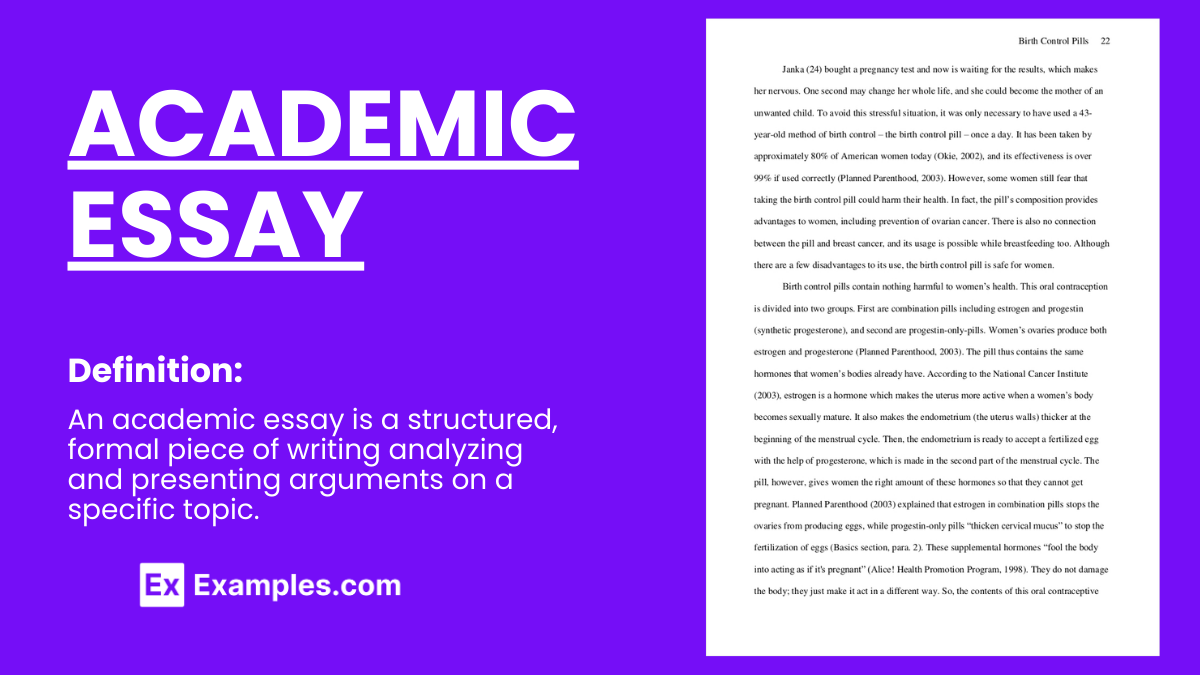
When creating an academic essay , it is very important for you to relay a sensible and clear argument to your target readers. Since academic essays are widely used in the field of education and research, you need to ensure that you do both logical, interesting and informative writing . The items that are commonly seen in an academic essay contain insights, actual occurrences, ideas, and facts.
What is Academic Essay?
An academic essay is a structured form of writing that serves the purpose of presenting and supporting a thesis or argument on a specific topic. It is commonly used in educational settings to assess students’ understanding, analytical skills, and ability to research and convey their findings. An academic essay typically follows a clear format, including an introduction with a thesis statement, body paragraphs that provide evidence and analysis to support the thesis, and a conclusion that summarizes the main points and reinforces the essay’s central argument. This type of essay requires critical thinking and a formal tone, with evidence cited from reputable sources to back up claims made within the text.
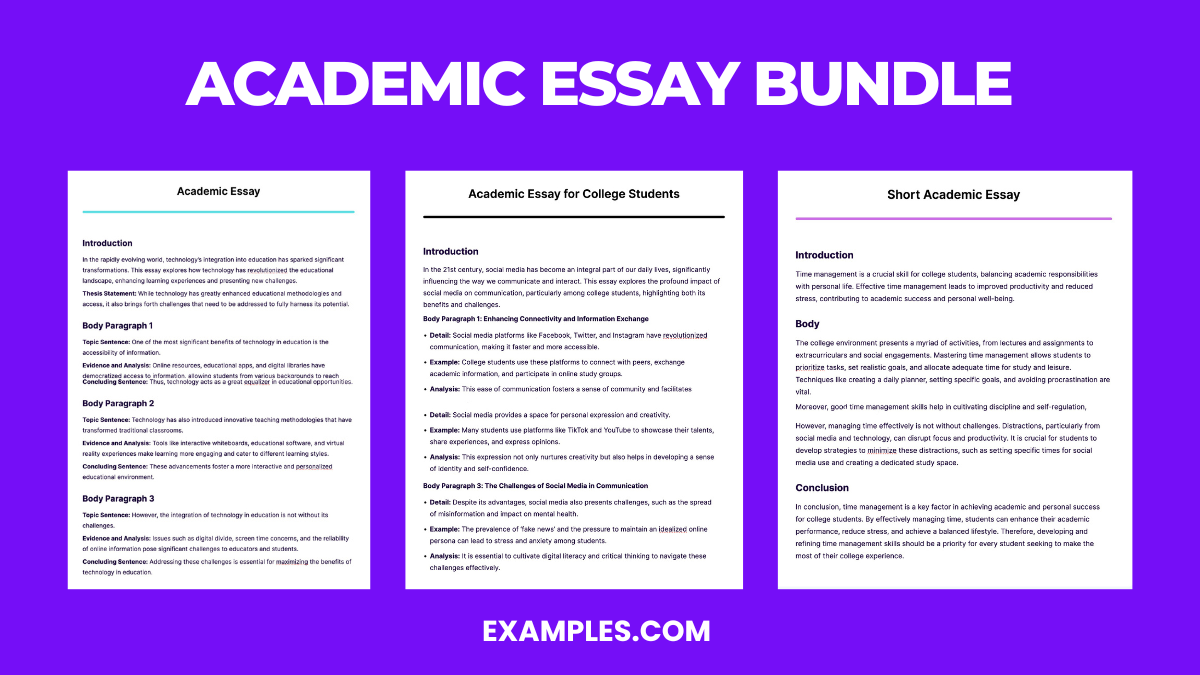
Download Academic Essay Bundle
A lot of students tend to think that an academic essay, just like any other college essay , is something that is too technical or defined. However, you can always write one depending on how you perceive a specific topic of discussion or how you interpret an instance or any other subjects. The samples that we have for you can be a great help if you would like to start writing your academic essay already.
Academic Essay Writing Format/ Outline
1. title page (if required).
Includes the essay’s title, the author’s name, and institutional affiliation.
2. Introduction
Hook : Opens with a statement to grab the reader’s interest. Background Information : Provides context for the topic being discussed. Thesis Statement : Presents the main argument or claim of the essay.
3. Body Paragraphs
Each paragraph should focus on a single idea that supports the thesis, structured as follows:
Topic Sentence : Introduces the main idea of the paragraph. Evidence and Analysis : Includes data, quotes, or examples to support the topic sentence, followed by an explanation of how this evidence supports the thesis. Transition : Connects to the next paragraph or idea.
4. Conclusion
Summary of Main Points : Restates the key arguments or findings presented in the body paragraphs. Restatement of Thesis : Reinforces the essay’s main argument in light of the evidence presented. Closing Thought : Offers a final insight, a call to action, or a suggestion for further research.
Example of Academic Essay Writing
The Impact of Social Media on Communication In the digital age, social media has revolutionized the way we communicate, transcending physical boundaries and transforming social interactions. This essay explores the profound impact of social media on communication, examining both its positive advancements and negative implications. While social media platforms like Facebook, Twitter, and Instagram have enhanced our ability to connect with others, they have also led to a decline in face-to-face interactions and a dilution of personal communication skills. Social media has made it easier than ever to stay connected with friends and family, regardless of geographical distance. A study by Smith and Duggan (2016) found that 75% of internet users utilize social media to maintain relationships with distant family and friends. This widespread use of social media for keeping in touch demonstrates its role as a vital communication tool, bridging the gap between people worldwide. However, the reliance on social media for communication has led to a decrease in the quality of interpersonal interactions. Research by Johnson (2018) indicates a 40% decline in face-to-face conversations among young adults, correlating with increased social media usage. The preference for digital communication over personal interaction suggests a shift in social dynamics, potentially harming relational depth and emotional connections. Moreover, social media has affected our communication skills, particularly among younger generations. A survey by Lee (2019) revealed that 60% of teachers believe social media use has adversely affected students’ writing and verbal communication skills. The informal language and abbreviations common in social media posts and messages are infiltrating academic and professional communications, underscoring the need for a balanced approach to digital interactions. Social media has undeniably transformed communication, offering unparalleled connectivity but also presenting significant challenges. While it fosters global connections, its overuse can undermine personal interactions and communication skills. Balancing social media use with face-to-face communication is crucial for maintaining meaningful relationships and effective communication in the 21st century.
What is an example of academic writing?
Title: The Impact of Climate Change on Biodiversity
Introduction: Climate change, driven primarily by human activities such as the burning of fossil fuels and deforestation, has emerged as a critical global concern. This essay aims to explore the multifaceted impacts of climate change on biodiversity. The effects of rising temperatures, altered weather patterns, and habitat destruction are increasingly evident, with far-reaching consequences for ecosystems and species worldwide.
Body Paragraph: One of the most noticeable consequences of climate change is the shifting geographical ranges of numerous species. Warmer temperatures prompt species to migrate to higher altitudes or latitudes, as they seek habitats that align with their thermal preferences. This phenomenon is evident in various ecosystems, including mountain regions, where alpine plants and animals have progressively moved uphill. These migrations, while adaptive, can disrupt established predator-prey relationships and competition for resources. Such shifts can also lead to reduced biodiversity in lower-altitude regions as some species fail to adapt or relocate successfully.
- Smith, J., & Johnson, A. (2019). Impacts of Climate Change on Alpine Plant Communities. Environmental Studies Journal , 42(3), 256-270.
- Wilson, P., & Davis, R. (2020). Climate-Induced Shifts in Animal Distributions: Evidence from a Decadal Study. Ecology and Evolution , 10(12), 5963-5972.
Conclusion:
In conclusion, climate change exerts profound effects on biodiversity, manifesting through shifts in species distributions, altered ecological relationships, and habitat loss. As global temperatures continue to rise, addressing these impacts becomes increasingly urgent. Conservation efforts, sustainable practices, and international cooperation are essential in mitigating the repercussions of climate change on the world’s diverse ecosystems and species.
Academic Essay Topics with Samples to Edit & Download
- Pollution due to urbanization
- The environmental causes of smoking
- The outcomes of global warming
- Abortion as a controversy
- Causes of obesity in teenagers
- Childhood memories
- Fathers should get equal paternity leave
- Harmful dogs should be euthanized
- How does divorce affects children?
- How does technology affect productivity?
- Importance of preserving threatened species
- Parenting styles and motives
- Political issues in the U.S.
- Romantic relationships
- Should schools abolish homework?
- Violent video games should be banned
- Ways of protecting the environment
Academic Essay Writing Examples & Templates
1. academic essay example.
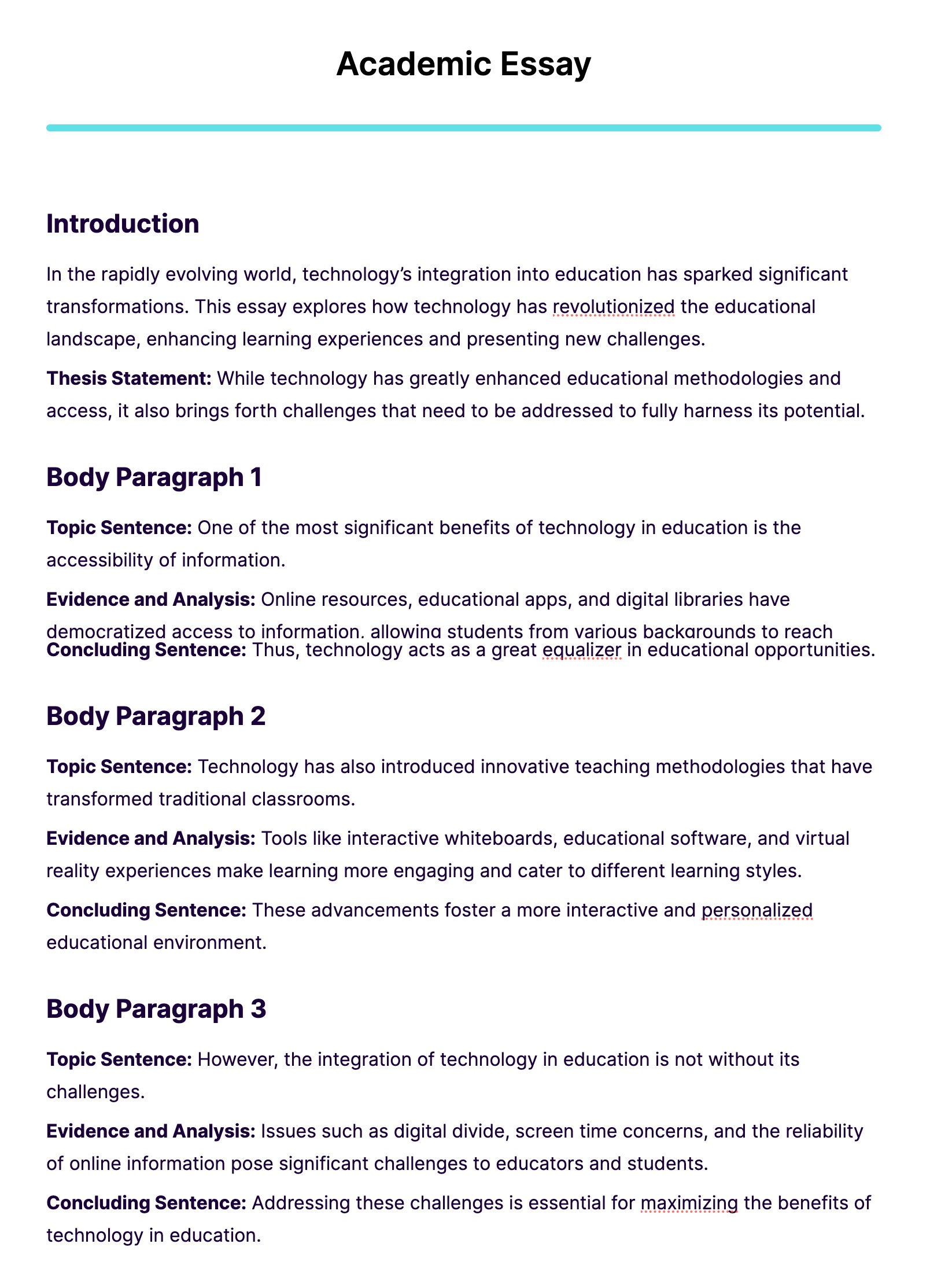
Free Download in PDF
2. Academic Essay for College Students
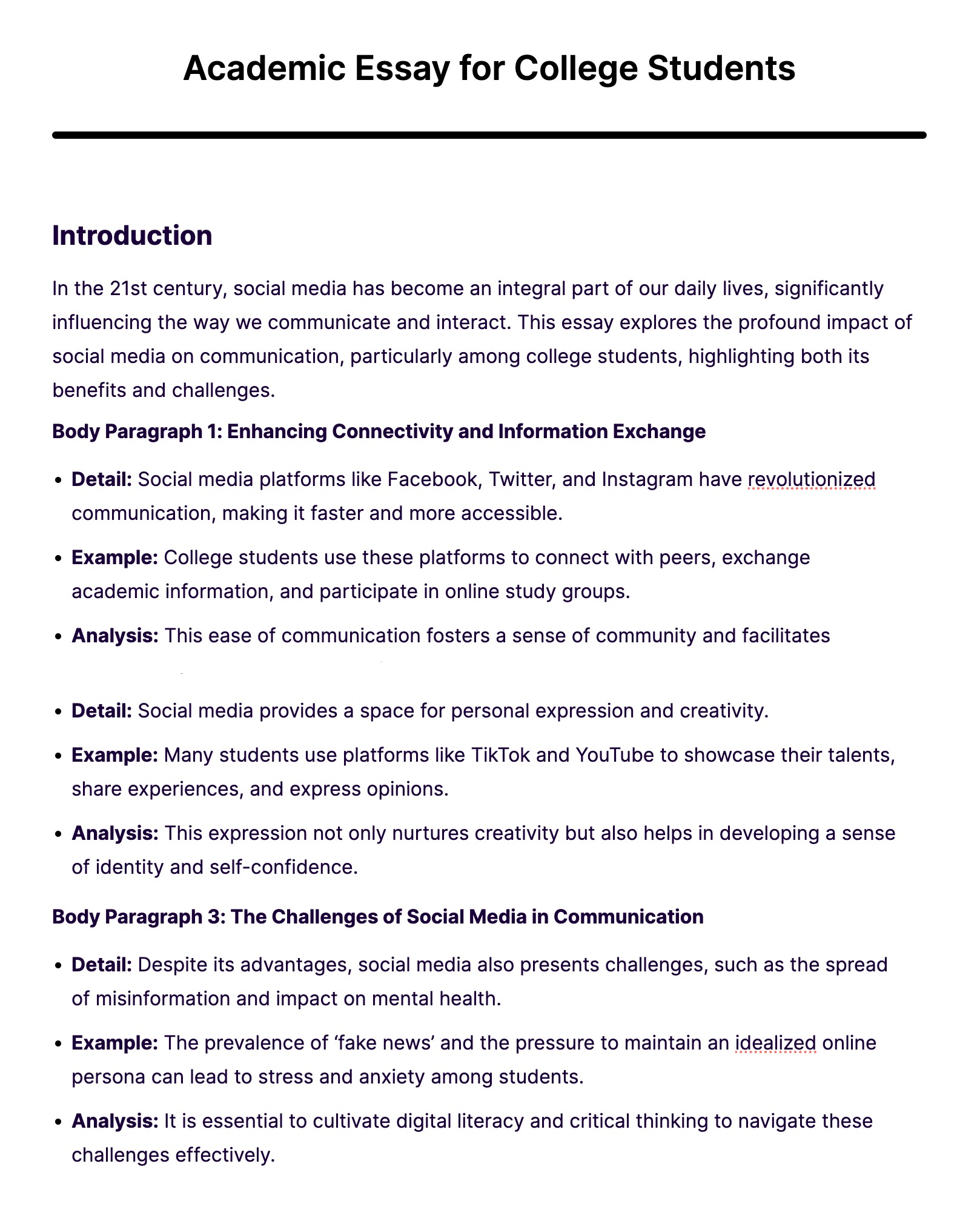
Edit & Download
3. Short Academic Essay
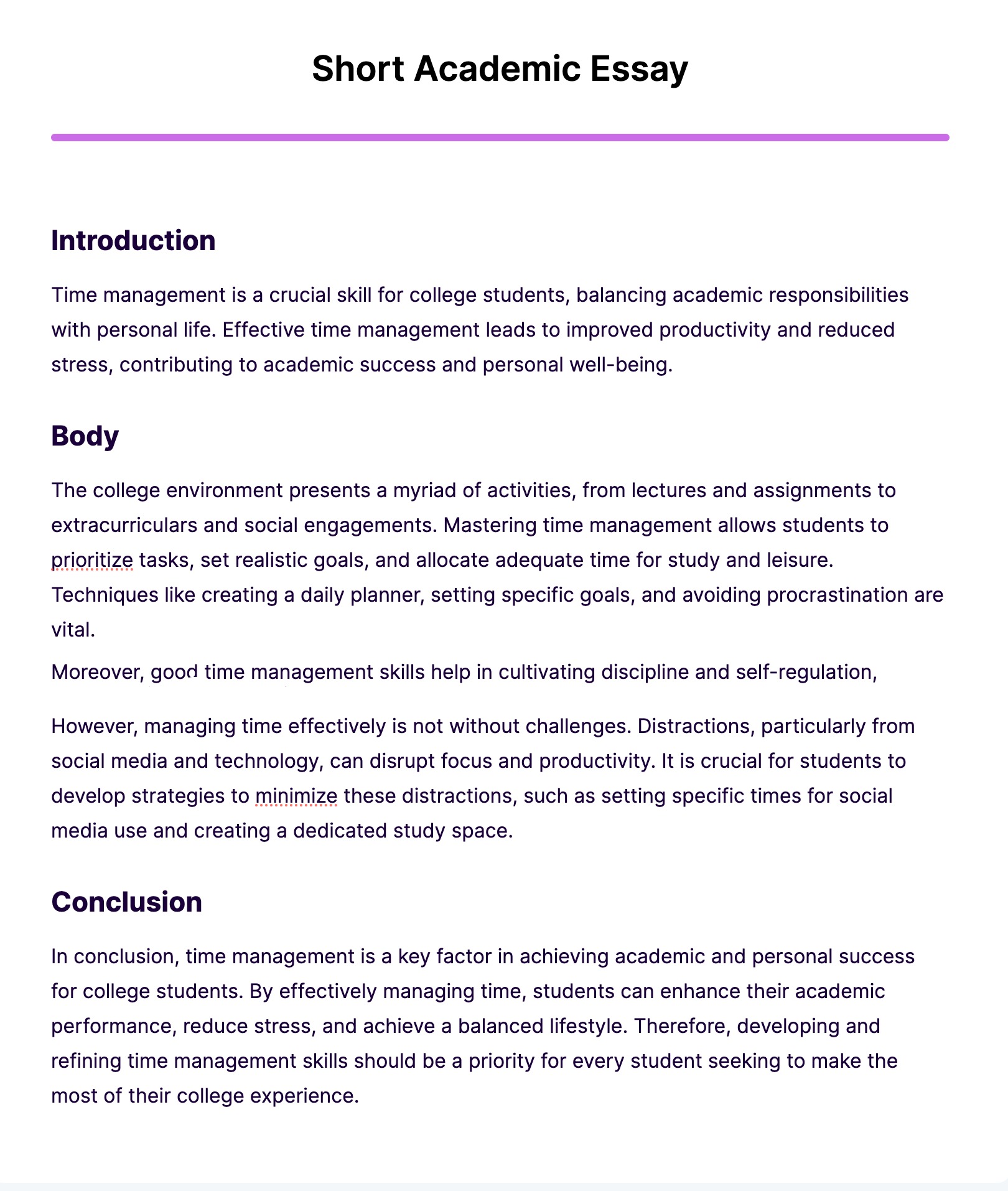
4. Academic Essay Template
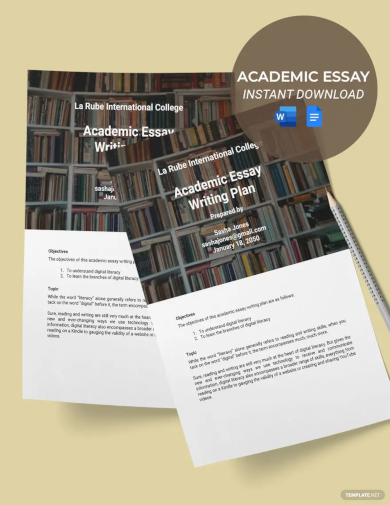
5. Academic Writing Essay Template
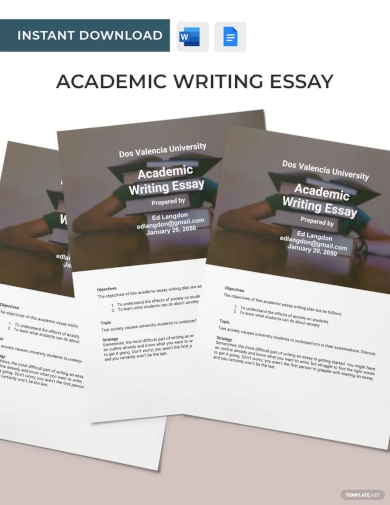
6. Academic Text Example Essay Template
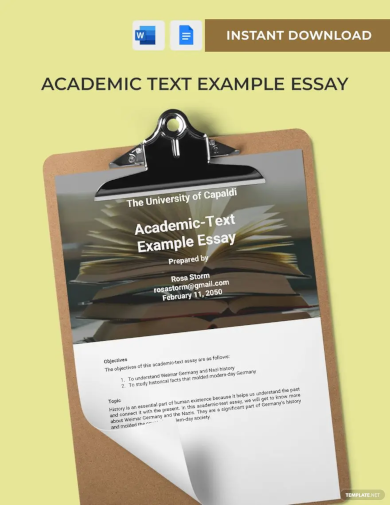
7. Academic Essay Writing Examples
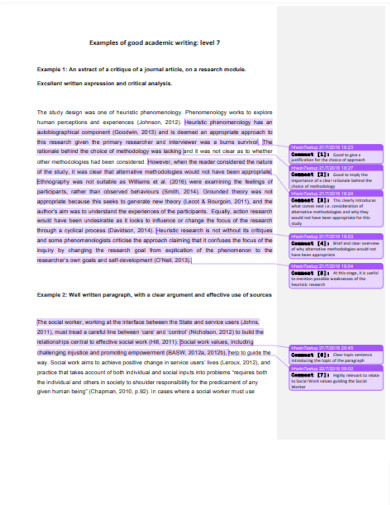
academic-skills.health.herts.ac.uk
8. Academic Essay for College Students Examples

9. Narrative Academic Essay Examples
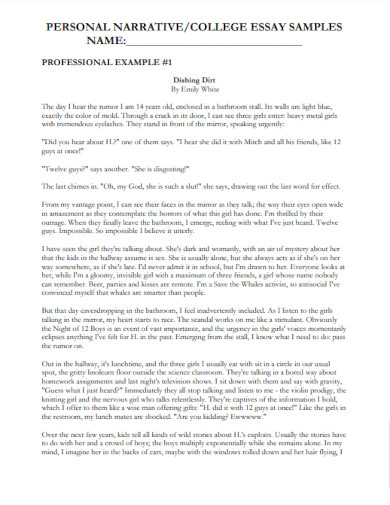
learning.hccs.edu
10. Sample Academic Essay Format Example

owll.massey.ac.nz
11. Academic Paper Essay Example
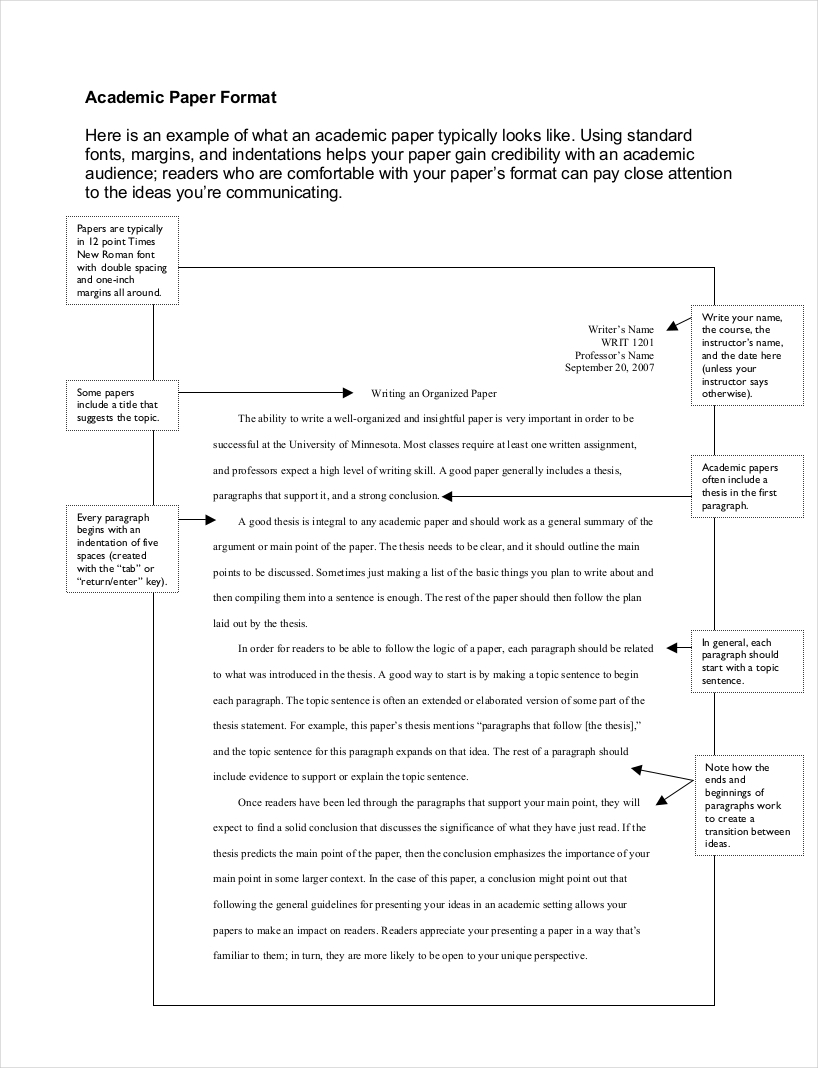
writing.umn.edu
12. Simple Academic Essay Example
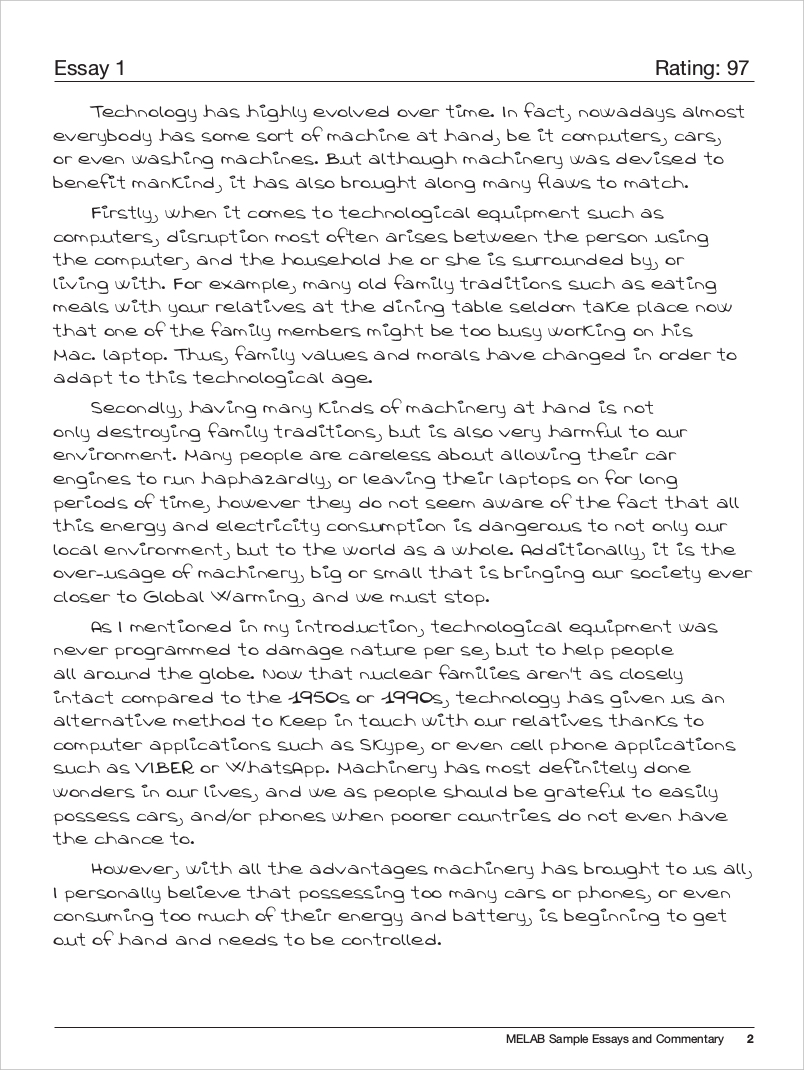
cambridgemichigan.org
13. Academic Essay Sample Structure Example
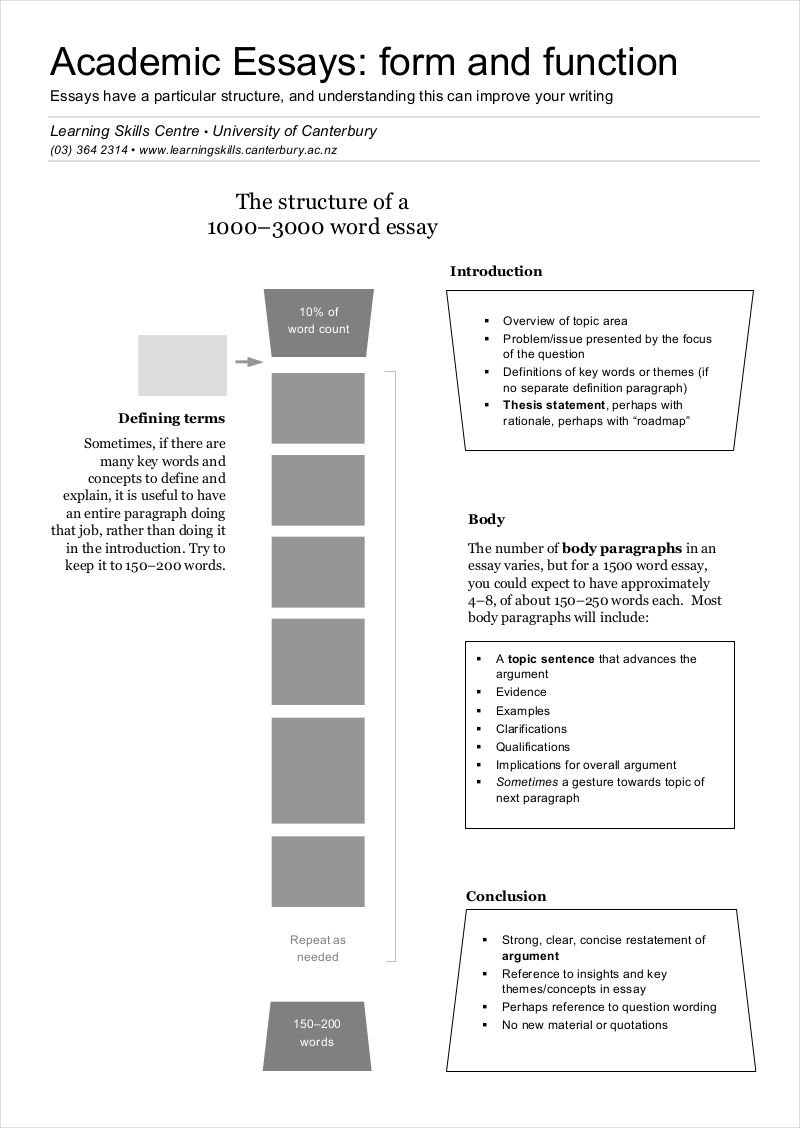
lps.canterbury.ac.nz
14. Short Academic Essay Example in PDF
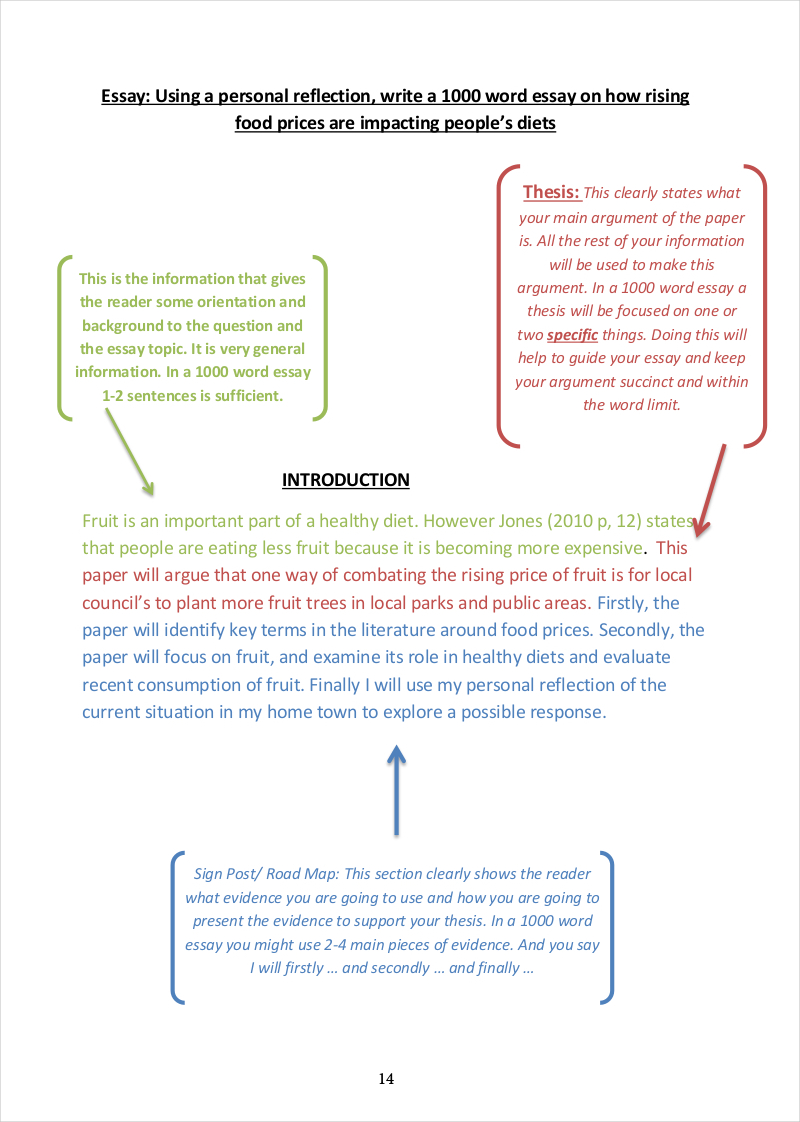
15. Free Printable Academic Essay Sample
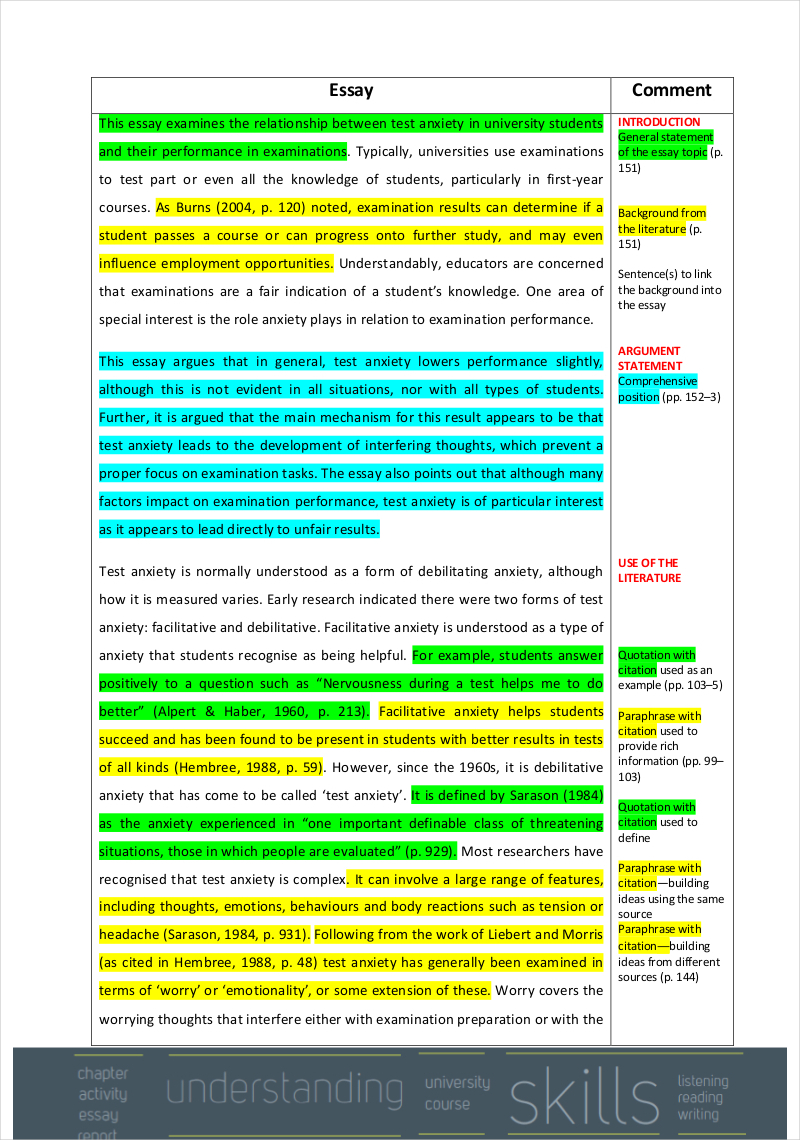
lib.oup.com.au
16. Sample Academic Essay Example
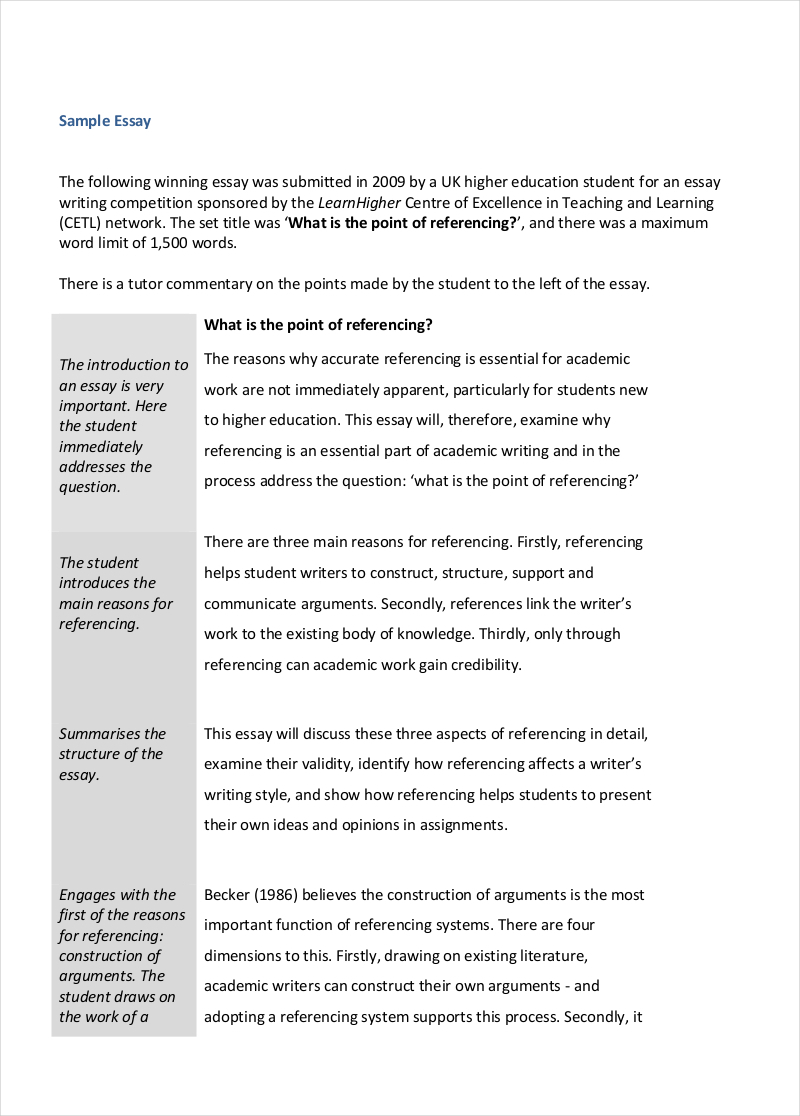
17. Academic Essay Writing Sample Example
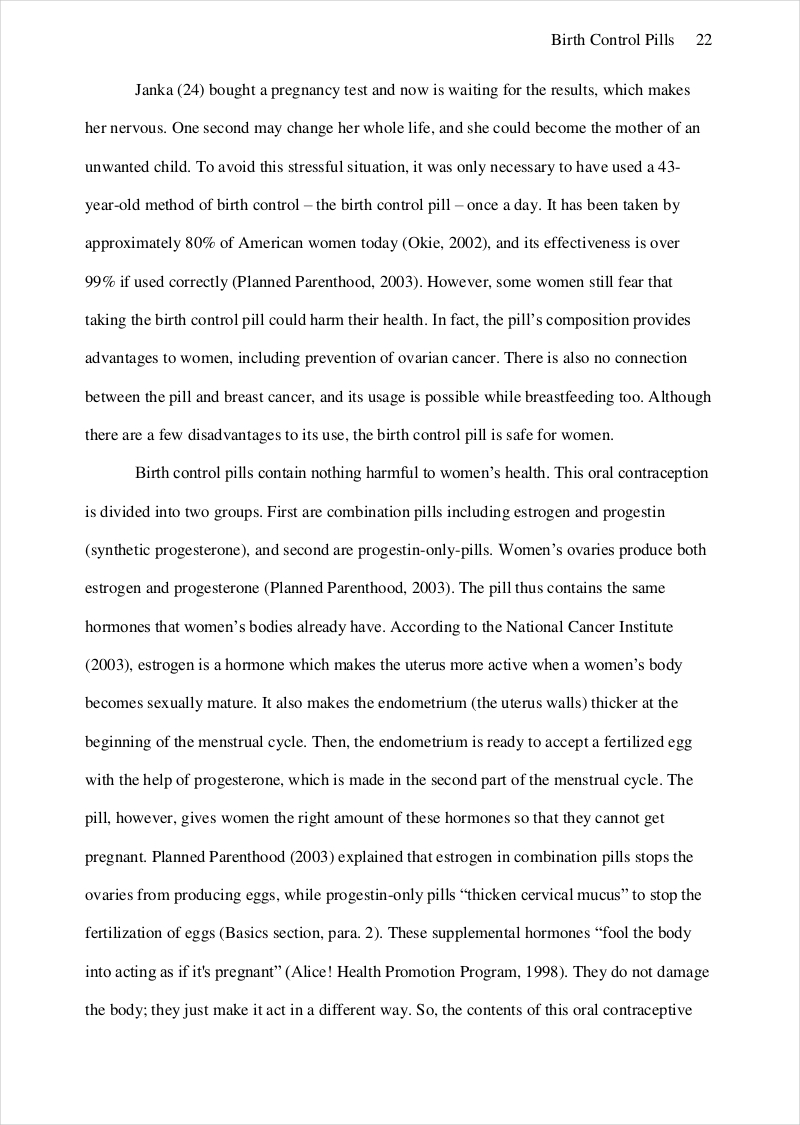
18. Free Academic Essay Sample Guide

intranet.ecu.edu.au
19. Sample Academic Essay Outline
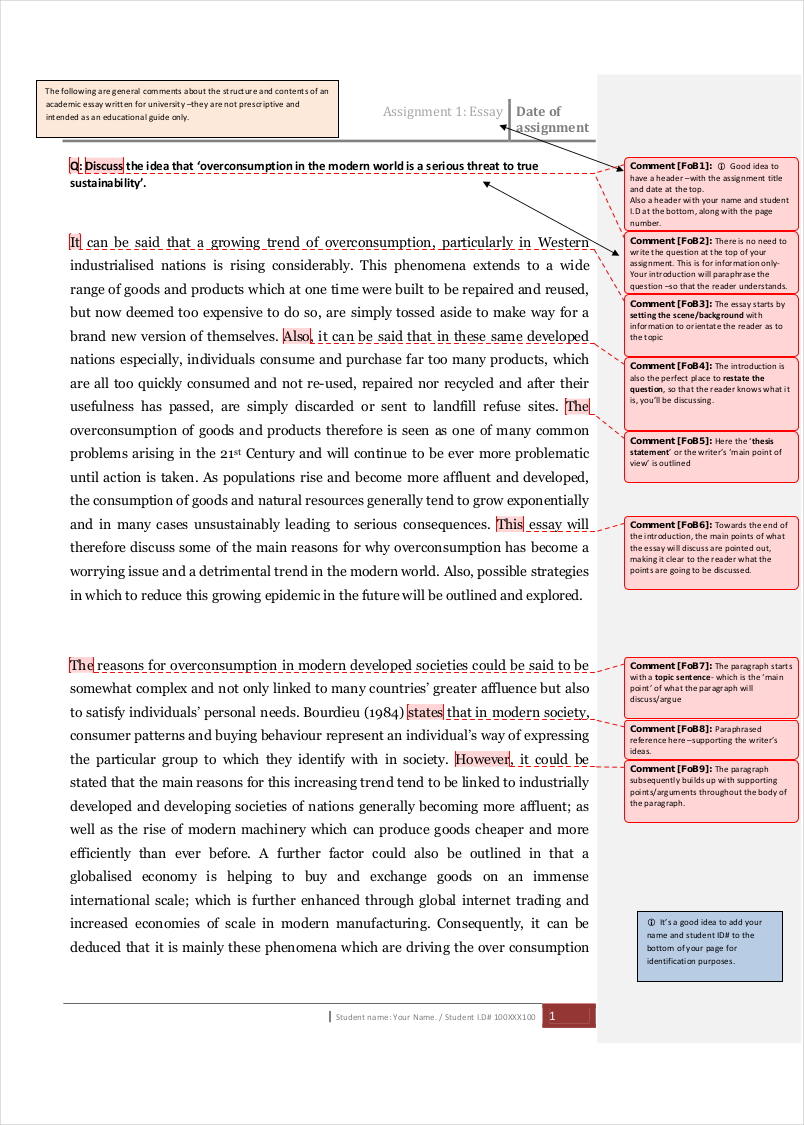
lib.uts.edu.au
Are You Ready and Prepared to Create an Academic Essay?
Different types of academic writing require an individual to have a clear thought process within the entirety of idea development. You have to be focused on what you would like to achieve your final written output so you can incorporate successful guides and processes within the activity. Some of the things that you can talk about in an academic essay include the following:
- Human behavior, characteristics, and emotions
- Community relations
- Natural occurrences
- Language and its effective usages
- Culture and the arts
- Academic researchers
- Relevant cultural phenomenon
- Photography and other artistic undertakings
- Human interactions
- Other subjects that are related to education and academics
Knowing the subject of your article is only one of the initial things that can help you prepare during the writing process. Here are some ways on how you can be ready to write your academic essay:
- You need to have an order of writing that can easily showcase the flow of your thoughts. You must ensure that you can easily connect with your readers or audience so they can respond to the content of your article. Your academic essay should evoke an emotion that is necessary to spark other ideas, opinions and other kinds of responses.
- You need to be aware that academic essays differ depending on the educational or academic discipline where they will be used. There are certain ways that are necessary to be followed in various fields for an academic essay to be deemed effective. With this, always be mindful of the directions or instructions were given to you by the entity who requires you to write an academic essay.
- You do not need to pattern your writing to the works of others. You can be ready even by just knowing your subject and researching about it. The style of writing that you have can give the most difference to how you write and how you present your work. Always keep in mind that your academic essay should be playful – it must not bore your audience.
- You must think of your academic essay as an enterprise by using scholastic writing approaches. The conversation that you can create with your readers must be relevant to what is happening nowadays or for the study that specific student groups need. Being able to give focus on the relativity of your written work can make it easier for readers to understand why your academic essay is important within the academic field.
- You should ensure that your thesis statement is precise, concise, and strong. When you are in the process of developing your academic essay’s thesis, you need to make sure that you are not just basing your write-up on unreliable information. Always refer to evidence, facts, and real data as it can help you strengthen your claims. More so, do not forget to reference your essays when necessary.
Things to Remember When Identifying the Purpose of Your Academic Essay
An academic essay always has to be relevant. It needs to be beneficial to a specific group or to the majority of the academic community. The motive of your essay is very important to be considered as it can identify whether you can be of help to the people who need a particular educational reference. Here are a few things that you need to remember when identifying the purpose of your own academic essay:
- Do not create an academic essay just for the sake of passing it. Your academic essay is more than an assignment or a project. There are some last minute essay writing activities that are done in various fields especially if students think that an academic essay is just a part of their requirements. However, what these students do not know is that an academic essay is a representation of themselves. It showcases the thoughts of the students, what they have learned may it be in class or through self-discovery, and how they are impacted by certain issues and subjects of discussion. This is where the value of a Free Essay and an Informative Essay becomes evident, as both types of essays encourage students to express their understanding and insights on a given topic freely and informatively.
- Be precise with the purpose of your writing. An academic letter is not just a document that can showcase your mastery when it comes to a particular academic subject. It can talk about a specific subject or it can also be a general paper that can provide a lot of information about your experiences and/or insights. This is where the importance of a Self-Introduction Essay comes into play, allowing you to present a personal narrative that reflects your academic journey and achievements. Similarly, an Expository Essay helps in laying out facts and an unbiased analysis of a topic, further enriching the academic discourse. If you will have a precise purpose when writing an academic essay, there is no doubt that your essay will not be pointless.
- Always think of the best case that can help you represent your thoughts. Your style of writing, as well as the entire document’s format and content, can help you realize your ideas. This includes the succinctness and clarity often found in a Short Essay , where the challenge is to convey your thoughts within a limited word count effectively. Similarly, a Scholarship Essay requires you to articulate your achievements and aspirations in a way that resonates with scholarship committees, demonstrating your potential and need for financial support. With this, your point of writing can easily be identified by readers. Being able to present your purpose the best way possible can add up to the success of your academic paper.
Developing an Academic Essay
For you to be able to persuade your readers with the content of your academic essay, there is a need for you to present a structure that can easily identify your claims, arguments, observations, and/or factual presentations. Integrating a Student Essay can demonstrate the personal perspective or learning journey of an individual, making your arguments more relatable. Similarly, incorporating a Travel Essay could enrich your essay by providing unique insights and observations from different cultures or environments. Being clear about how you present your idea is essential for people to see the context of your academic essay.
If you have an organized manner of putting together the concepts of your academic essay, then validating your thesis statement can be more evident. To avoid common essay mistakes and other negative factors that can affect your desired output, here is a basic guide on how you can develop your own academic essay:
- Start by creating a strong thesis statement. Identify your stand and make sure to strictly present evidence that can help you claim its authenticity and validity. Reveal evidence after your thesis statement presentation. Your thesis statement serves as your introduction speech . It lets your readers know the topic of your academic essay and what they can expect from the entire article.
- Establish the context of your essay after your thesis statement. The way that you approach your topic can let readers know whether it is the specific approach that they also need for their undertakings. There are different contexts that can be used within the same subject, so you have to make sure that you will be clear when it comes to identifying the part of the topic that you are going to talk about. This clarity can be achieved through a Descriptive Essay , where vivid descriptions and details about the topic can enlighten and engage the reader. Additionally, understanding the Parts of an Essay is crucial in structuring your thoughts and arguments effectively. Limiting your topic discussion can help you give more focus to what is important for your discussion, ensuring that each part contributes meaningfully to the whole.
- Create the next paragraphs based on the data that can support your thesis statement. The body of your academic essay can be based on your observations, reviews, statements and research outputs. You can present these items separately through the usage of various paragraphs. However, there are instances where it will be better if you can combine or compare to evidence to make your statements more effective.
- Conclude. Your conclusion is as important as your introduction. If you believe that you have created a strong introduction, you have to maintain that until the end of your academic essay. Sum up all the information that you have presented so that people can identify whether your conclusion has lived up to the content of what you have written. Your conclusion can also be used to assess whether your thesis statement has been carried within the entirety of your discussion.
Importance of a Well-Defined Thesis Statement in an Academic Essay
A thesis statement is a paragraph or a set of paragraphs that identifies your stand about your subject. There is a need for this statement to be created as it can affect the entirety of your academic paper. Here are some of the reasons why it is important to develop an effective thesis statement before and while writing your academic paper:
- Your thesis statement is a reflection of your actual idea. This helps you present the point that you would like to make and the message that you actually want to disseminate to your readers. Through a thesis statement, you can organize the evidence that are relevant to your claims based on their relevance to the topic and how you view it as a writer.
- Your thesis statement can guide you within the entirety of your writing processes. Just because you have already done an initial thesis statement does not mean that you are going to fully stick with it until the end of your writing. There are instances where thesis statements are developed or even changes during the creation of an academic essay depending on how the research about the topic has evolved.
- Your thesis statement can allow you to establish originality. Since your academic essay can be based on your research findings and observations, your thesis statement can be your platform to specify what you have come up with. Through a well-defined thesis statement, you can set your output apart from other essay examples that have been written by professionals and other entities in the field of academics.
- Your thesis statement is one of the items that the audience will look at when referencing for credibility and validity. Academic essays need to have a strong initial impact on readers. This statement can help them be focused on a particular standpoint which can enlighten them about your views and opinions, and how these are essential to be considered.
- Your thesis statement can help your readers immerse in your academic essay. The material that you will be coming up with can be reviewed by different people. Depending on the field of education where you are currently in, you need to make sure that your readers can see patterns of evidence presented so they can clearly see how you were able to generate and come up with insights. You have to ensure that the thesis statement that you have created contains the most promising thought so you can get the trust or even the acceptance of your readers about your academic essay’s subject.
Guidelines in Writing an Academic Essay
The course materials that you need to talk about within an academic essay can reflect your level of understanding about the subject. Simply put, an academic essay can be an evidence of the depth of your research procedures and all the other activities that you have executed so that you can support the content of your written output. Listed below are some of the guidelines that can be useful to your academic essay writing processes.
- Always analyze your essay prompt or the question that you need to answer or explain. You have to know whether you are tasked to argue, analyze, or discuss the topic. There will be times where you also need to compare the items present in your subject or explain the underlying factors that can affect your topic.
- Make sure that you will research about what you will write about . Your academic essay can only be fully-maximized if you can present facts. Primary research may be a helpful bit a more precise review of your research topic can help you gather more information that can be helpful in the development of your content. Always assess your sources of information so you can ensure that they are credible.
- Create a draft so that you will have a guide when writing your academic essay. If you will be organized when writing your academic essay, you can create an output that is well-curated and comprehensive. With this, your academic essay can provide more impact to your readers. This can also help you gather your thoughts first and identify how you can put them all together in the most cohesive and efficient way possible.
If you still do not feel confident in writing your own academic essay from scratch, then you can refer to templates and samples which you can download online. Doing this will allow you to be more familiar with the common content and basic formats that are usually seen in an academic essay. When using a template as a guide, always make sure that it is applicable to the study that you are practicing or the academic field or discipline where you will use your academic essay.
As a student, there will always be an instance where we will be required to write an academic essay. If you want to create an academic essay that is both outstanding and relevant, always put the items that we have discussed above in mind.
Setting the Stage for Essay Writing Success
- Understand the Assignment: Carefully read and comprehend the essay prompt or assignment to grasp its requirements and objectives.
- Topic Selection: Choose a relevant and interesting topic that aligns with the assignment.
- Research: Gather credible sources and information related to your topic. Take thorough notes and document your sources.
- Thesis Statement: Develop a strong, clear, and concise thesis statement that presents the main argument of your essay.
- Outline: Create an outline that organizes your essay into sections, including the introduction, body paragraphs, and conclusion. Each section should have a clear purpose.
- Writing Draft: Begin writing your essay, keeping the introduction engaging, and ensuring each body paragraph addresses a single point or idea supported by evidence.
- Citations: Properly cite sources as you write, following a recognized citation style (e.g., APA, MLA).
- Edit and Revise: Review and revise your draft, focusing on grammar, clarity, coherence, and organization.
- Proofread: Carefully proofread your essay for errors in spelling, punctuation, and sentence structure.
- Final Review: Double-check that your essay fulfills the assignment requirements, including formatting, citations, and references.
How do you write an academic essay?
- Understand the Assignment: Read the essay prompt or assignment thoroughly to grasp its requirements and objectives.
- Research: Gather relevant sources and information from books, articles, and credible online sources.
- Plan and Outline: Create an outline with an introduction, body paragraphs, and a conclusion. Each section should have a clear purpose.
- Thesis Statement: Develop a strong thesis statement that presents the main argument of your essay.
- Introduction: Start with a compelling hook, provide background information, and present your thesis statement.
- Body Paragraphs: Each paragraph should focus on a single point or idea, supported by evidence or examples. Use topic sentences to introduce the main idea of each paragraph.
- Citations: Cite sources properly using a recognized citation style (e.g., APA, MLA, Chicago).
- Analysis and Critical Thinking: Analyze and evaluate the evidence or arguments presented, and make connections between them.
- Transition Sentences: Use transition words and phrases to connect ideas between paragraphs.
- Conclusion: Summarize the main points, restate the thesis, and provide a thoughtful conclusion that leaves a lasting impression.
Academic Essay Characteristics
Academic essays are distinguished by several key characteristics that set them apart from other types of writing. These features ensure that essays meet the rigorous standards of academic discourse and contribute effectively to scholarly conversations. Here are the primary characteristics of academic essays:
- Clear Purpose : An academic essay is written with a clear purpose, often to argue a point, present an analysis, or discuss a research finding. The purpose guides the structure and content of the essay.
- Structured Format : It follows a structured format with an introduction, body paragraphs, and a conclusion. This organization helps present arguments and evidence in a coherent and logical manner.
- Thesis Statement : A distinctive feature is the thesis statement, a concise summary of the main argument or claim, usually found at the end of the introduction. It sets the direction for the entire essay.
- Critical Analysis : Academic essays involve critical analysis of ideas, texts, or situations. Writers assess evidence, debate viewpoints, and use logic to develop their arguments.
- Evidence-Based Arguments : Claims made in academic essays are supported by evidence from credible sources. This includes data, statistics, research findings, and quotations from experts.
- Formal Tone and Style : The writing adopts a formal tone and style, avoiding colloquial language, personal anecdotes (unless relevant), and slang. It maintains an objective and professional voice.
Types of Academic Writing
Academic writing encompasses a variety of types, each serving a specific purpose and adhering to a particular format. Here are some of the main types of academic writing:
- Descriptive Writing : This type focuses on describing a character, event, or situation in detail. It’s often used in reports or descriptive essays, where the goal is to provide a clear picture of the subject to the reader.
- Analytical Writing : Analytical writing breaks down complex information into smaller components for better understanding. It involves comparing and contrasting, classifying, and analyzing causes and effects. This type is common in research papers and literature reviews.
- Persuasive Writing : Persuasive writing aims to convince the reader of the writer’s viewpoint or argument. It is characterized by a strong thesis statement, clear evidence, and logical reasoning to persuade the reader. Opinion pieces, argumentative essays, and proposals often employ persuasive writing.
- Expository Writing : Expository writing is used to explain or inform the reader about a specific topic in a clear, concise, and logical manner. It focuses on presenting facts, statistics, and examples without the writer’s personal opinions. This type includes most essays, many types of reports, and certain types of research papers.
- Reflective Writing : This type involves the writer reflecting on their personal experiences, thoughts, or feelings regarding a particular subject or experience. Reflective writing is subjective and is often used in journals, blogs, and reflection essays in educational settings.
- Critical Writing : Critical writing evaluates and critiques the work of others, such as books, articles, or artworks. It involves assessing the strengths and weaknesses of arguments, evidence, and methodologies. Literature reviews, critique essays, and certain types of research papers often require critical writing.
- Narrative Writing : Although less common in strict academic settings, narrative writing is used in certain disciplines to tell stories or describe events chronologically. Personal statements and some types of qualitative research may employ narrative writing to convey experiences and observations.
- Report Writing : Reports convey information from a writer to a reader, focusing on facts and evidence. They are structured and include sections like an introduction, methodology, findings, and conclusions. Lab reports, business reports, and technical reports are examples of this type.
Academic Writing Principles
Academic writing is governed by a set of core principles designed to ensure clarity, precision, and rigor in scholarly communication. Understanding and adhering to these principles is essential for effective academic writing. Here are the key principles:
- Clarity : Writing should be clear and understandable, avoiding unnecessary jargon and complexity to ensure that the reader can easily follow the argument or narrative.
- Coherence : The text should be logically organized, with a clear structure that guides the reader through the argument or discussion. Each part of the writing should connect to the others in a meaningful way.
- Conciseness : Academic writing should be concise, conveying ideas in as few words as necessary. This does not mean oversimplifying, but rather avoiding redundancy and verbosity.
- Objectivity : Writers should strive for objectivity, presenting information and arguments based on evidence rather than personal opinions or biases. This includes acknowledging counterarguments and limitations.
- Precision : Precision involves using the exact words to convey your meaning and being specific about your claims, evidence, and references. This also means accurately citing sources and providing specific data when necessary.
- Evidence-Based Argumentation : Arguments should be supported with appropriate evidence, such as data, examples, and citations from authoritative sources. This principle underscores the importance of research and verification in academic writing.
- Formality : The tone of academic writing is formal, which means avoiding colloquial language, contractions, slang, and humor. Formality also involves using the passive voice where appropriate and avoiding personal pronouns when making general arguments.
- Citation and Referencing : Proper citation and referencing of sources are fundamental to academic writing. This practice not only gives credit to original authors but also allows readers to verify sources and understand the basis of the evidence presented.
- Originality and Plagiarism Avoidance : Academic writing must be original and free from plagiarism. This means that writers should produce their own work based on their research and ideas and appropriately cite any sources they use.
- Critical Thinking : Effective academic writing reflects critical thinking, challenging assumptions, evaluating evidence, and synthesizing ideas from various sources to offer new insights or perspectives on a topic.
How do you start an academic essay sample?
Begin an academic essay sample with a captivating hook, provide context on the topic, and conclude the introduction with a clear and concise thesis statement that outlines your main argument.
What is the opening line of an academic essay?
The opening line of an academic essay should engage the reader’s interest, introduce the topic, and provide a sense of the essay’s focus and importance.
What not to write in an academic essay?
In an academic essay, avoid personal opinions, emotional language, unsubstantiated claims, informal language, and plagiarism. Focus on evidence-based arguments and adhere to academic standards and conventions.
How do you write an academic essay quickly?
To write an academic essay quickly, start with a clear thesis, outline main points, research efficiently, focus on key evidence, and minimize editing while maintaining proper citations and structure.
Text prompt
- Instructive
- Professional
Write an academic essay on the impact of technology in education
Explain in an academic essay how climate change affects global agriculture

IMAGES
VIDEO
COMMENTS
An essay outline is a way of planning the structure of your essay before you start writing. It involves writing quick summary sentences or phrases for every point you will cover in each paragraph, giving you a picture of how your argument will unfold. You'll sometimes be asked to submit an essay outline as a separate assignment before you ...
Provide additional or supplemental supporting details, evidence, and analysis, as in the essay outline example. Topic Sentence: Shortening the school year would also provide many benefits for parents and caregivers. Detail Sentence 1: A shorter school year would mean less stress and running around for parents.
Step 4: Add Depth with Subpoints. To add depth and clarity to your essay, incorporate subpoints under each main point. These subpoints provide more specific details, evidence, or examples that support your main ideas. They help to further strengthen your arguments and make your essay more convincing.
Compare and contrast essays examine the similarities and differences between two subjects, offering a balanced view. For example, a compare and contrast essay on "Online Learning vs. Traditional Classroom" might follow this outline: I. Introduction. A. Discuss the rise of online learning platforms.
Start off by creating a broad thesis statement or central idea. Then move on to providing examples or pieces of information that support this statement or elaborate on it. This method also provides a comprehensive overview of your essay and helps identify any missing bits of information. 2. Generates greater impact.
Sample Outlines: As you can see in the outline below, the writer chose to separate the outline by topics, but could have utilized a different structure, organizing the outline by separate paragraphs, indicating what each paragraph will do or say. Example 1: Introduction A. Background information B. Thesis; Reason 1 A. Use quotes from x
An essay outline is a way of planning the structure of your essay before you start writing. In just 3 minutes, this video will show you how to organize your ...
Full Sentence Outlines. The full sentence outline format is essentially the same as the Alphanumeric outline. The main difference (as the title suggests) is that full sentences are required at each level of the outline. This outline is most often used when preparing a traditional essay. Select the "Sample Outlines" PDF in the Media Box above to ...
The final step of the outlining process is to repeat this procedure on the smallest level, with the original notes that you took for your essay. To order what probably was an unwieldy and disorganized set of information at the beginning of this process, you need now only think of a sentence or two to support your general argument.
1. Develop a Topic. The first step in your outline is to identify your topic. Once you have a clear understanding of the instructor's expectations, begin brainstorming topics that fit within the assignment. Make a list of ideas and pick the ones that are of your interest.
How to Outline an Essay: Basic Essay Outline Template. Written by MasterClass. Last updated: Jun 7, 2021 • 3 min read. Essay outlines are excellent tools for organizing your writing. A strong outline can turn a meandering essay into a focused, persuasive piece of writing.
requirements. However, this outline template can provide you with a starting point to help you organize your thoughts and brainstorm the shape and flow of your paper. Sample Outline Template I. Introduction A. Hook/ Attention Grabber 1. Provide a sentence that will catch the reader's interest. 2. Try not to make a broad/generalized statement ...
Academic Essay: The Sentence Outline (with signpost and echo words). Thesis: Earning a degree online has been harder but more satisfying than my other school experiences Topic Sentence 1: The first reason online study is harder is that the student works in isolation. Topic Sentence 2: The second reason studying online is harder is that it requires more writing, reading and computer skills.
There are two types of outlines. A topic outline lists words or phrases; A sentence outline lists complete sentences (a complete sentence is one that has a subject, a verb, and a predicate) Outlines can be arranged in two styles. Alphanumeric -- this means letters and numbers are used; Decimal -- this means decimals are used (1.0, 1.1, 1.2, 2.0
Full Sentence Outline. I. Man-made pollution is the primary cause of global warming. Greenhouse gas emissions are widely identified by the scientific community to be harmful. The burning of coal and fossil fuels are the primary releasers of hazardous greenhouse gases. Full sentence outlines are often accompanied with an APA reference list on a ...
Example essay outlines. Below are two examples of essay outlines that were written in response to the essay question: 'Explain the relationship between police culture and police accountability'. Version 1 reflects the sort of plans that many students produce. While it works as a starting point, it needs to be further developed.
The Online Writing Lab at Purdue University houses writing resources and instructional material, and we provide these as a free service of the Writing Lab at Purdue.
Example of Sentence Outline. Several aspects must be considered in writing a sentence outline. If you have chosen to write a sentence outline, all headings and sub-headings must be in sentence form. As in any outline, remember that a division or subdivision can not be divided into one part; therefore, if there is an "A" there must be a "B," and ...
Evidence and Analysis: Includes data, quotes, or examples to support the topic sentence, followed by an explanation of how this ... clear, and concise thesis statement that presents the main argument of your essay. Outline: Create an outline that organizes your essay into sections, including the introduction, body paragraphs, and conclusion ...